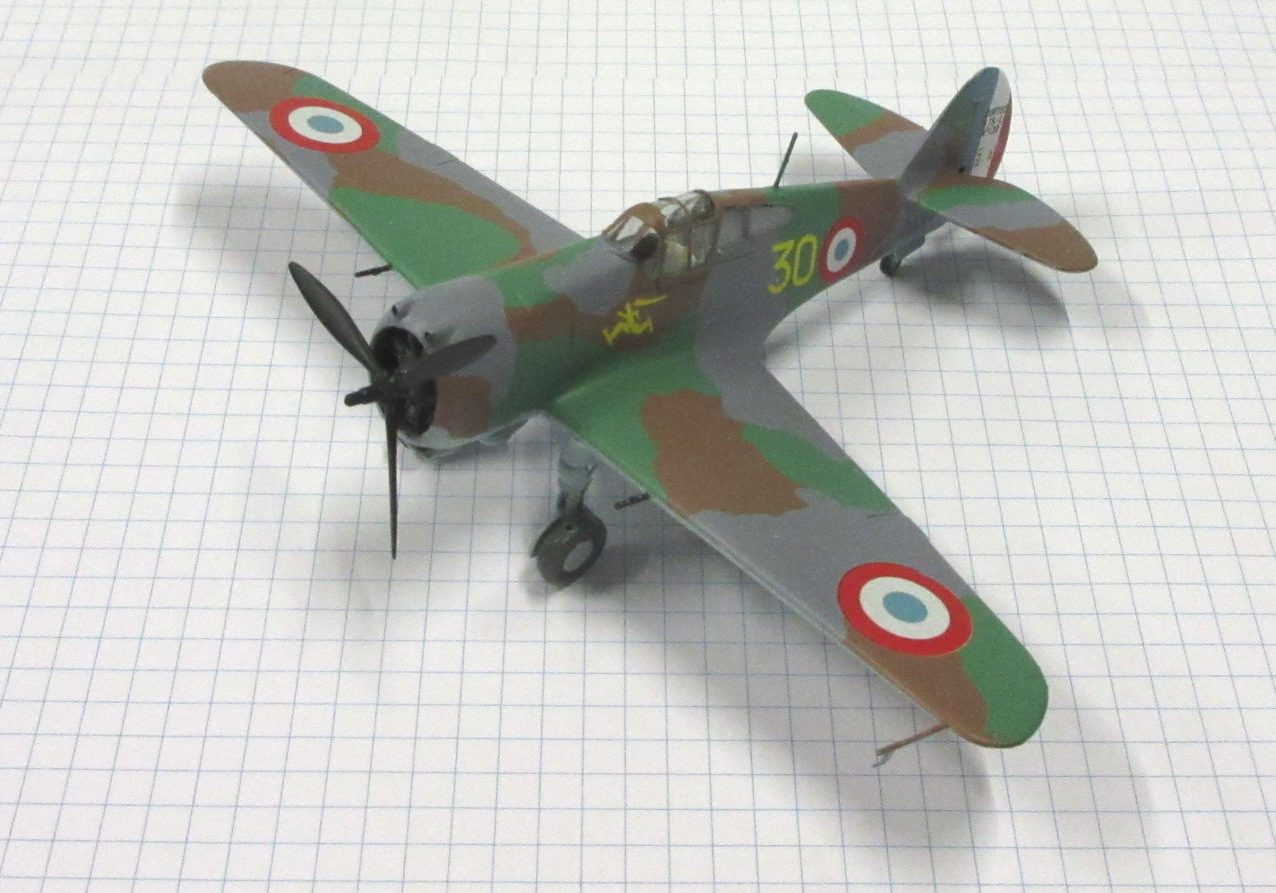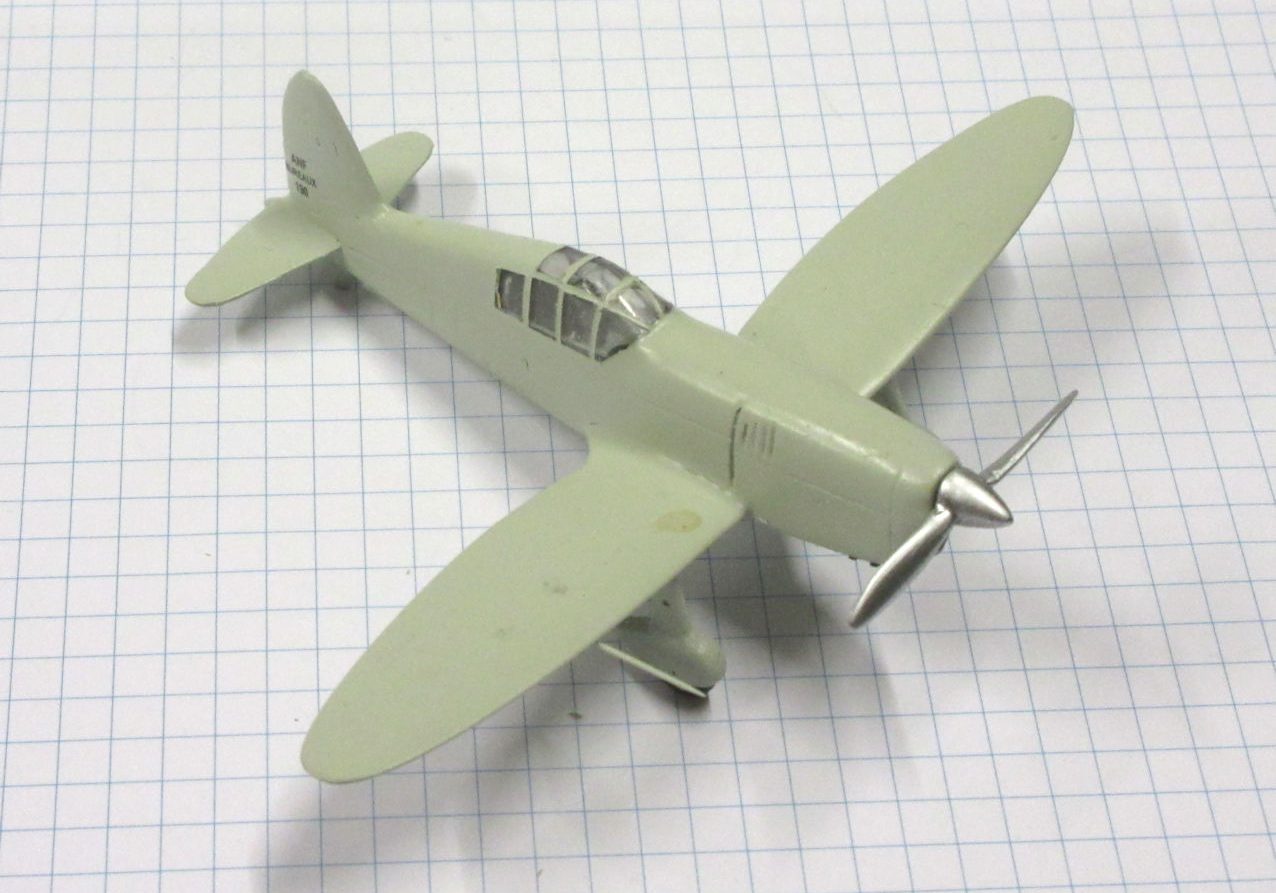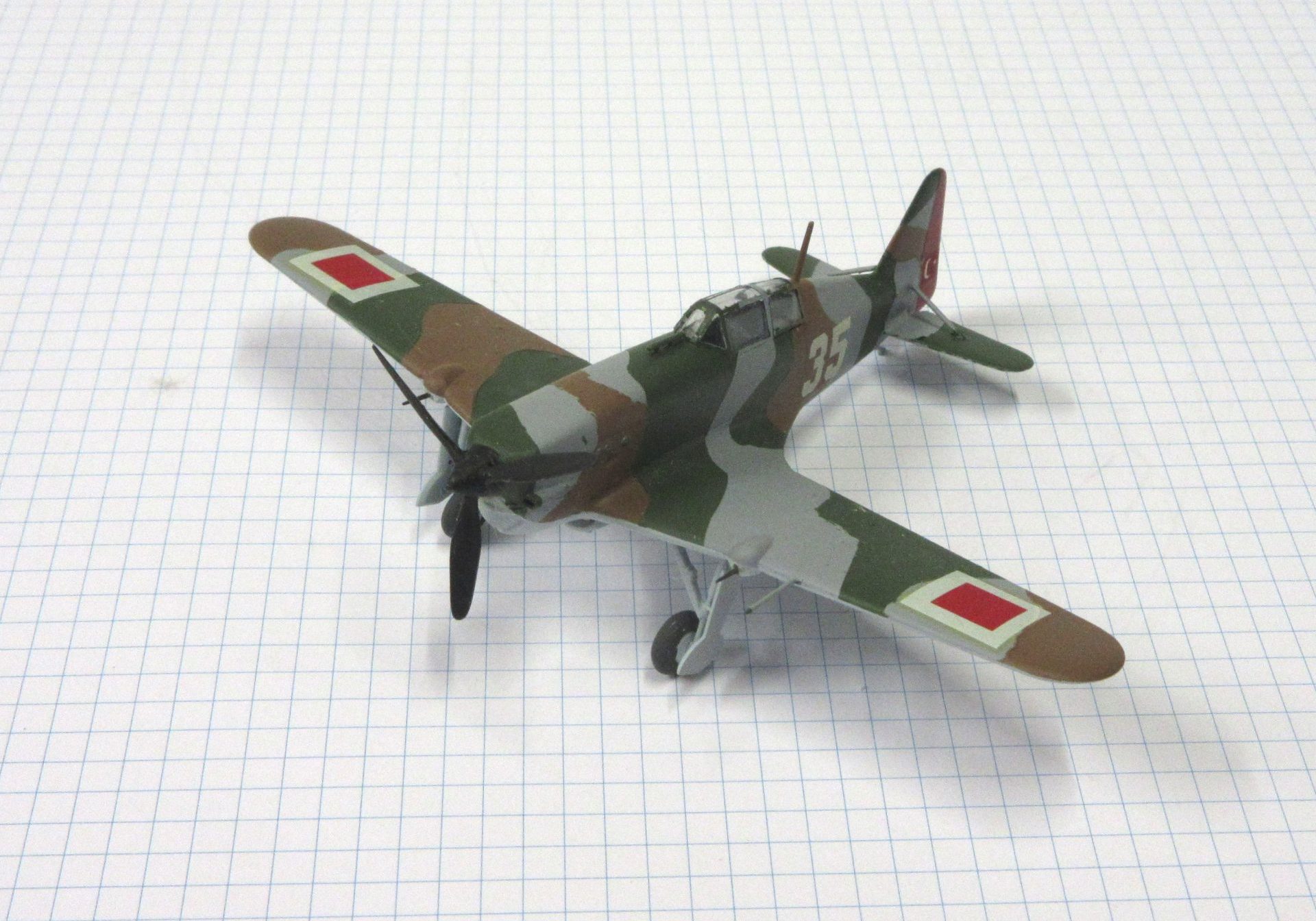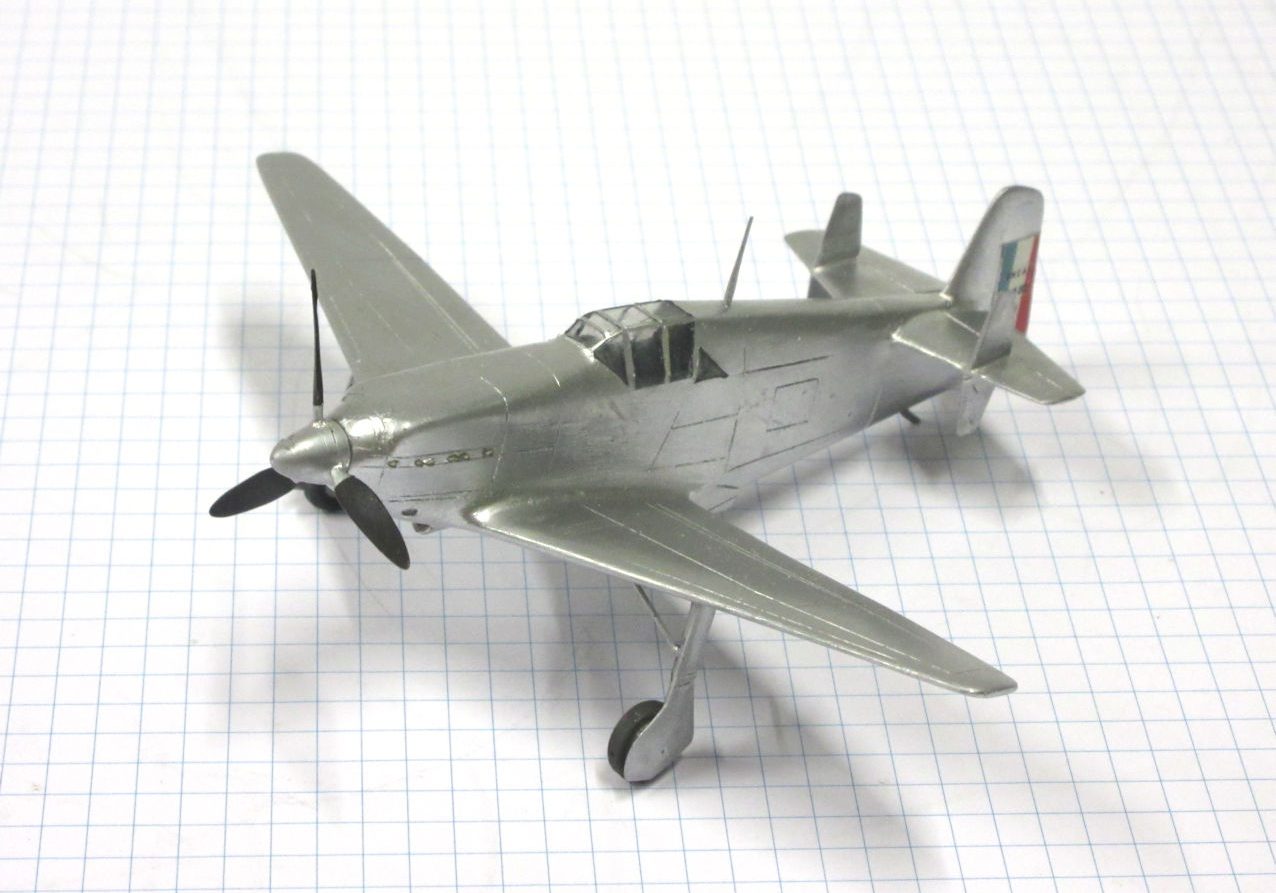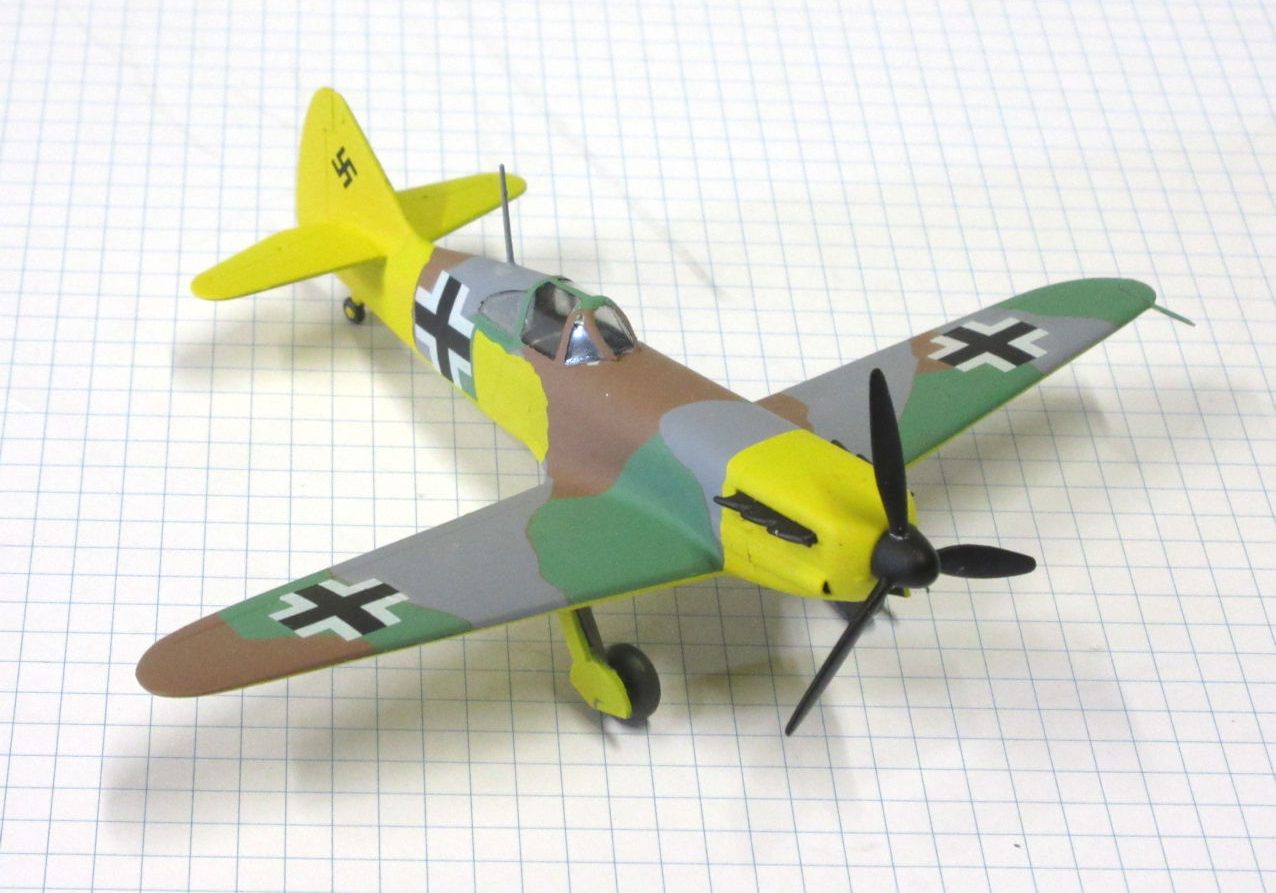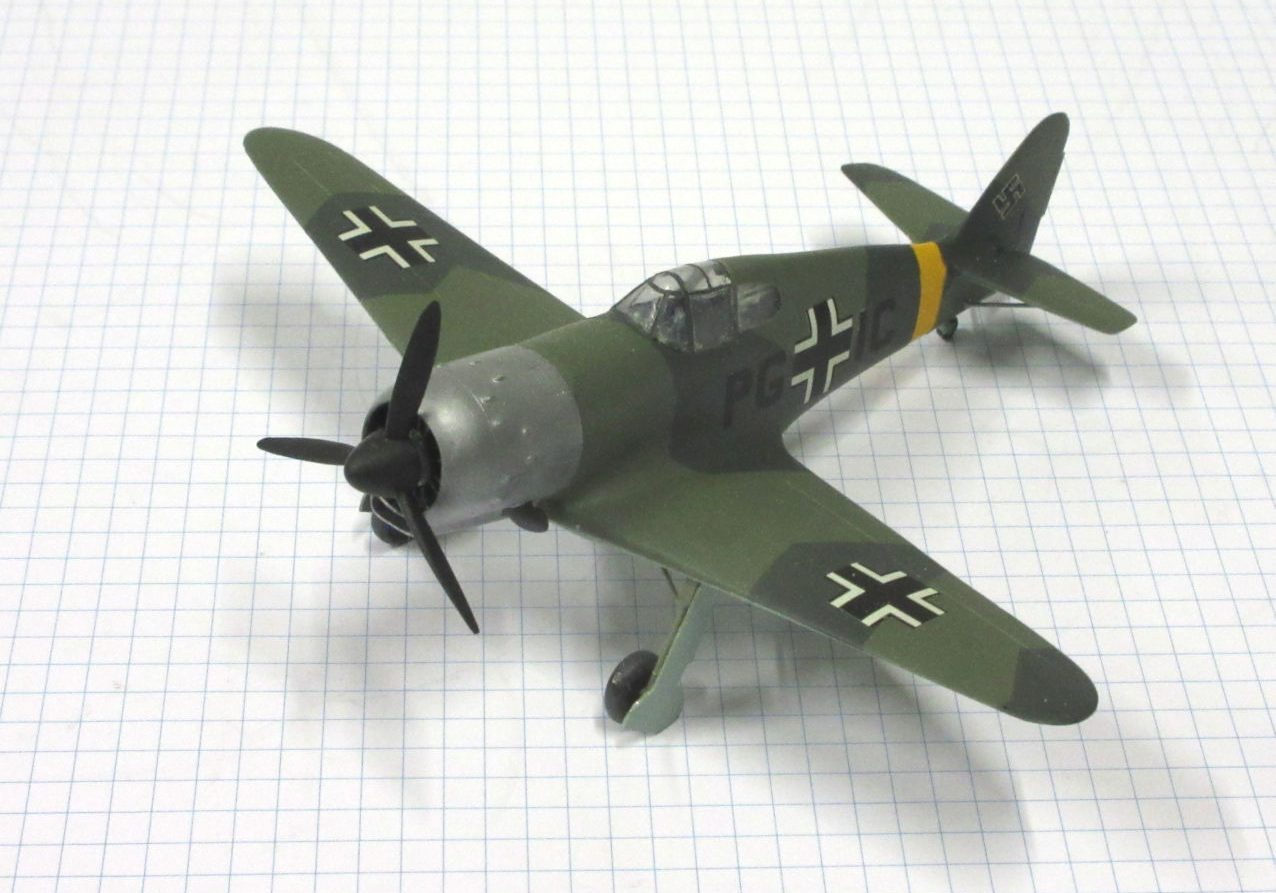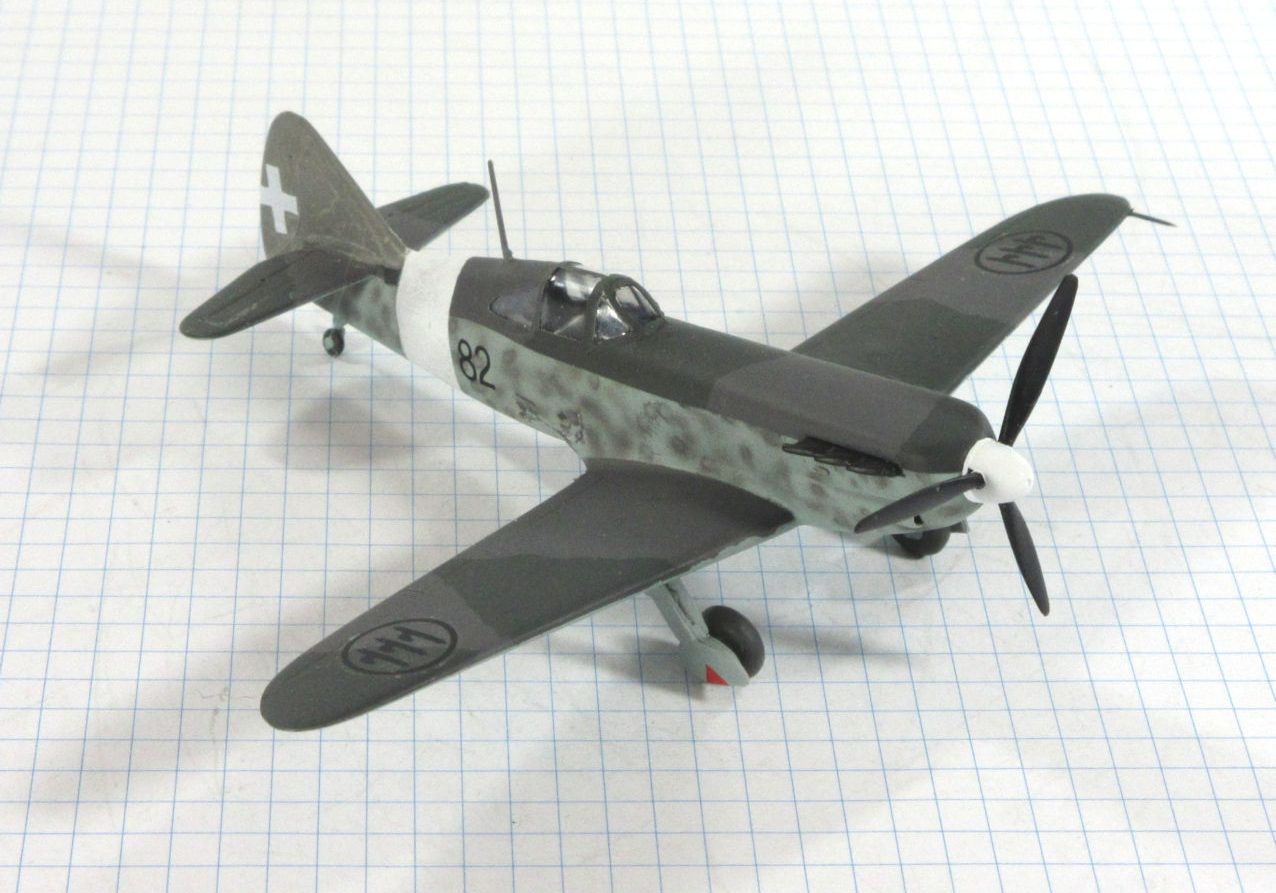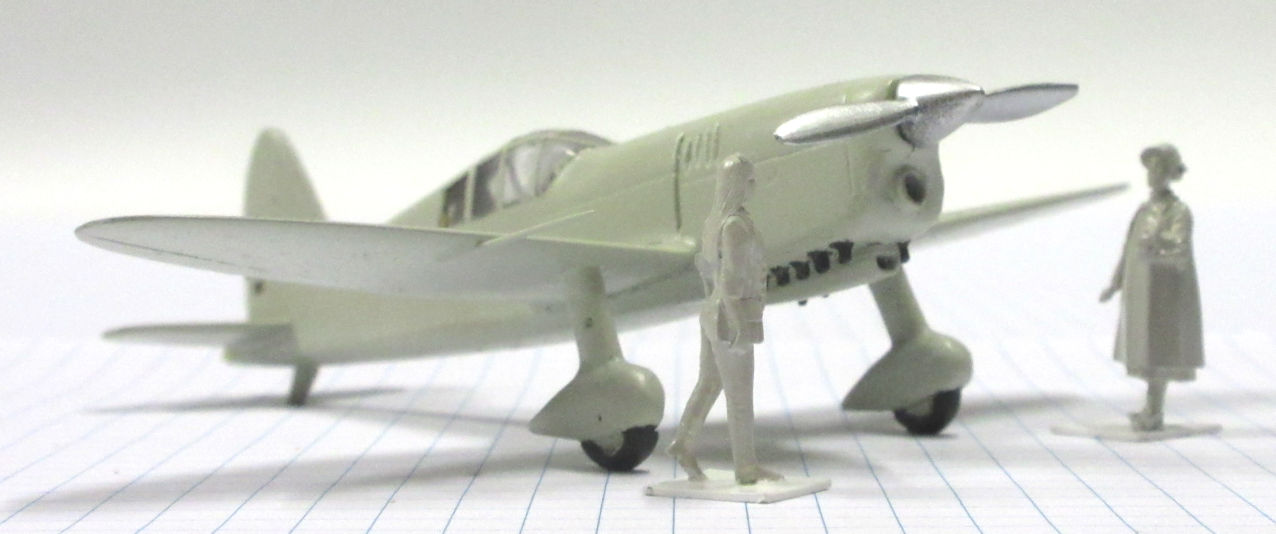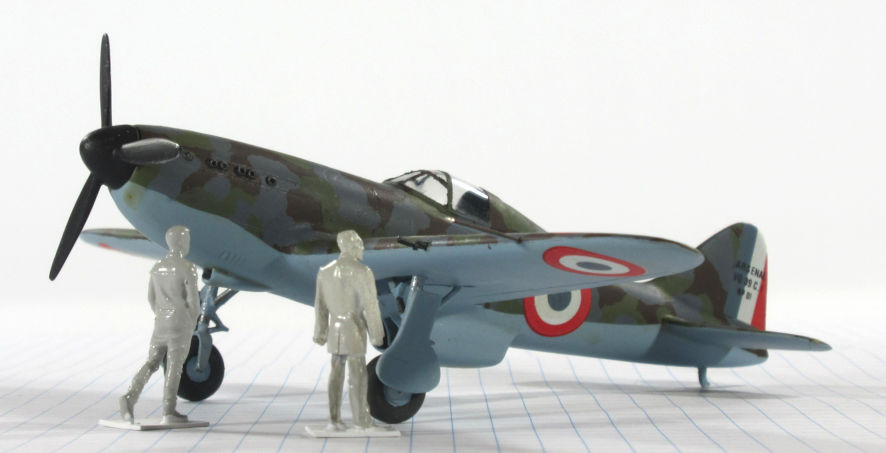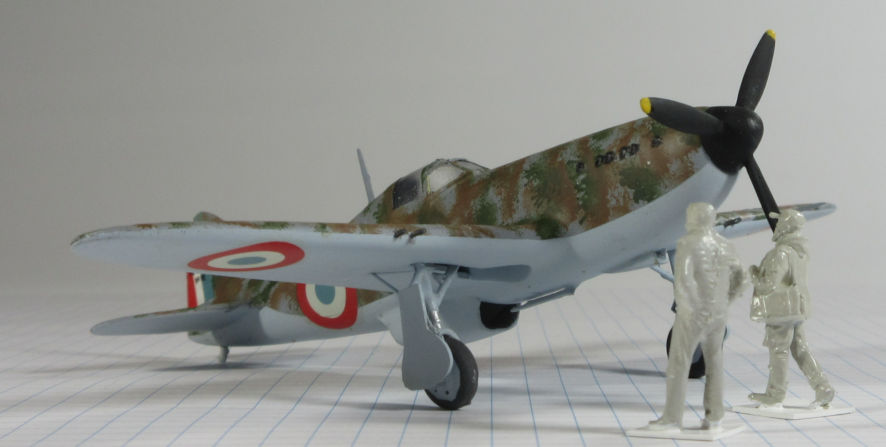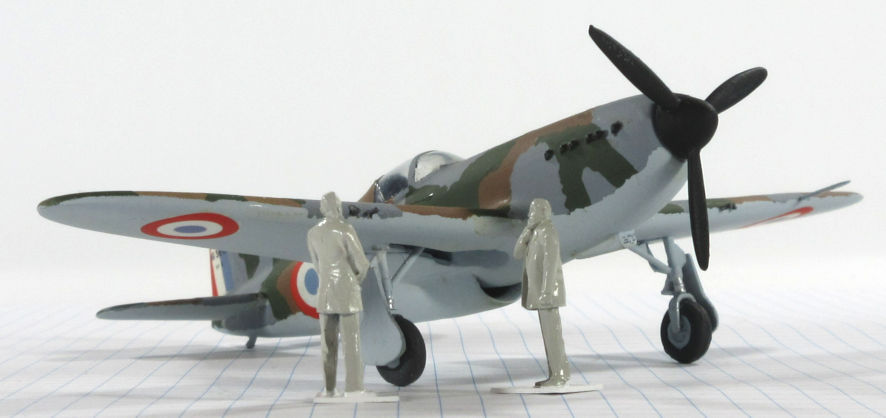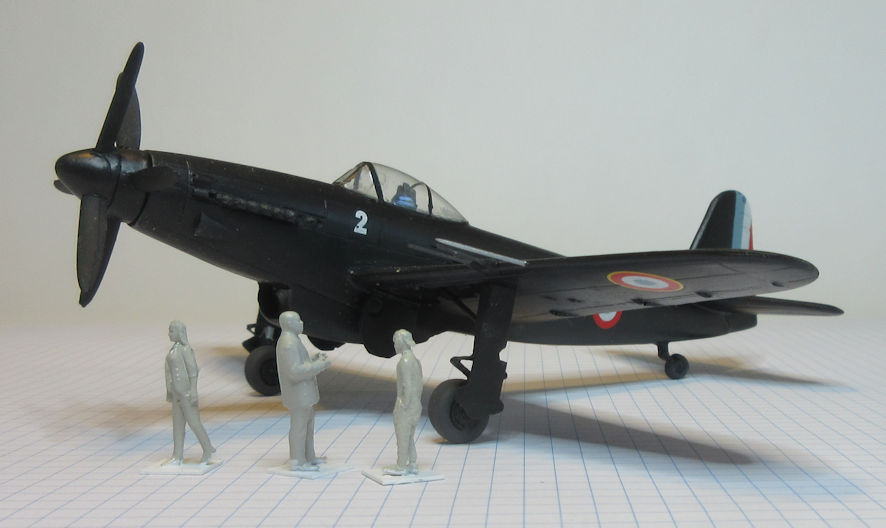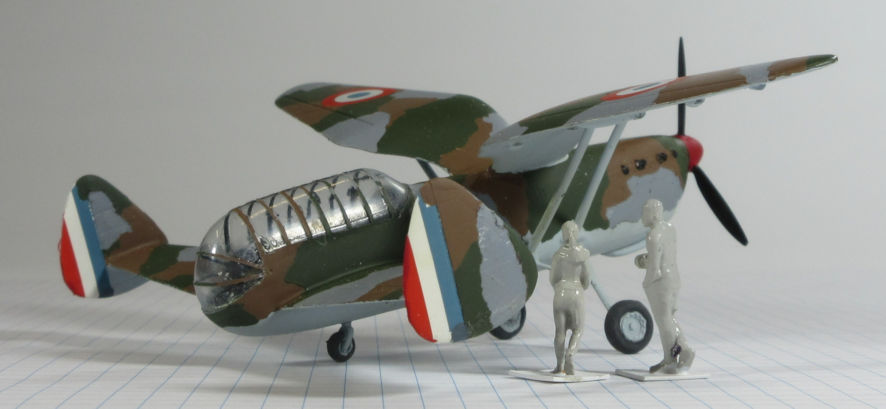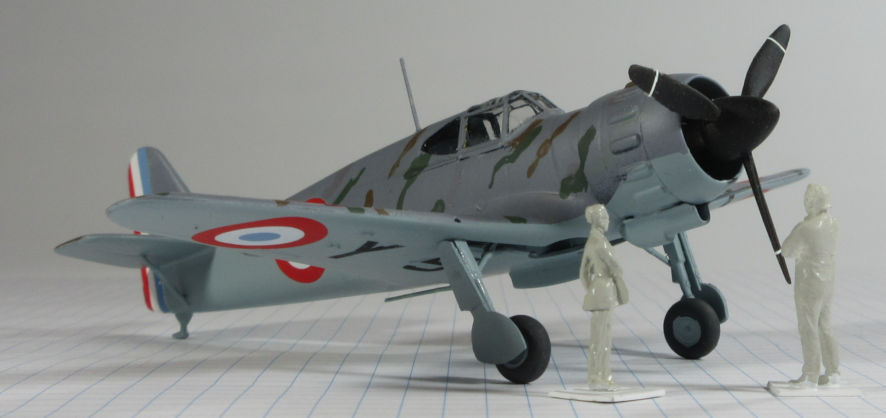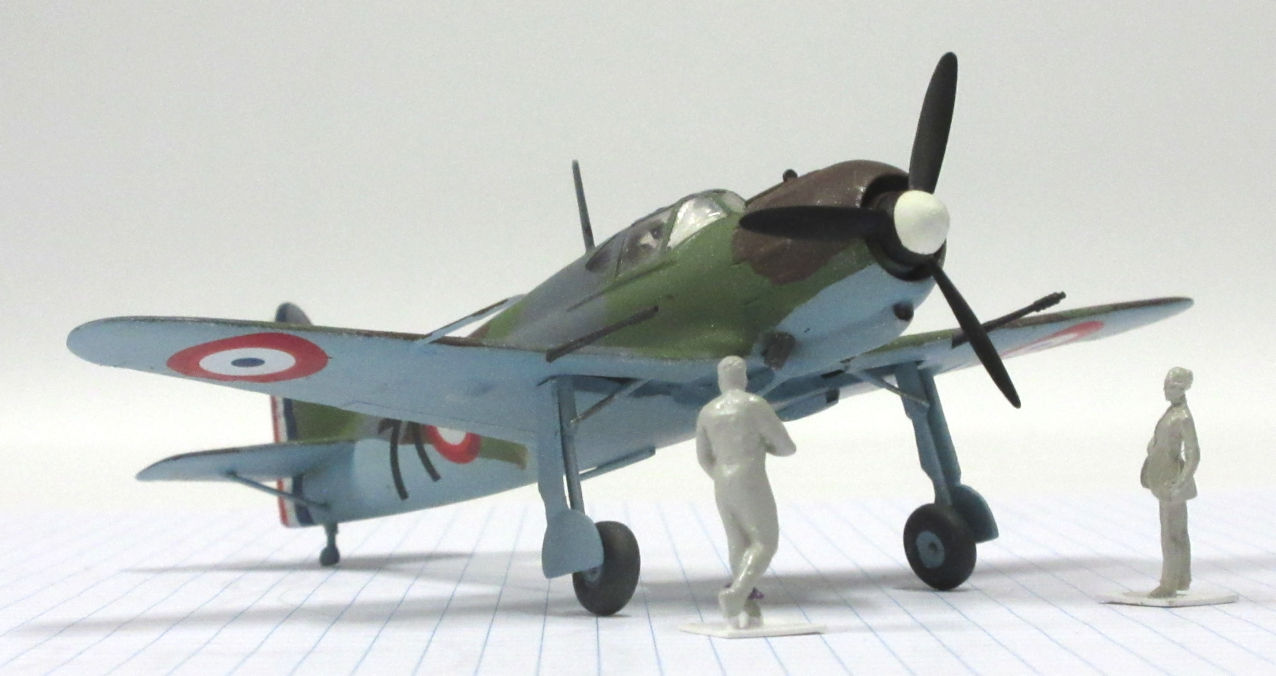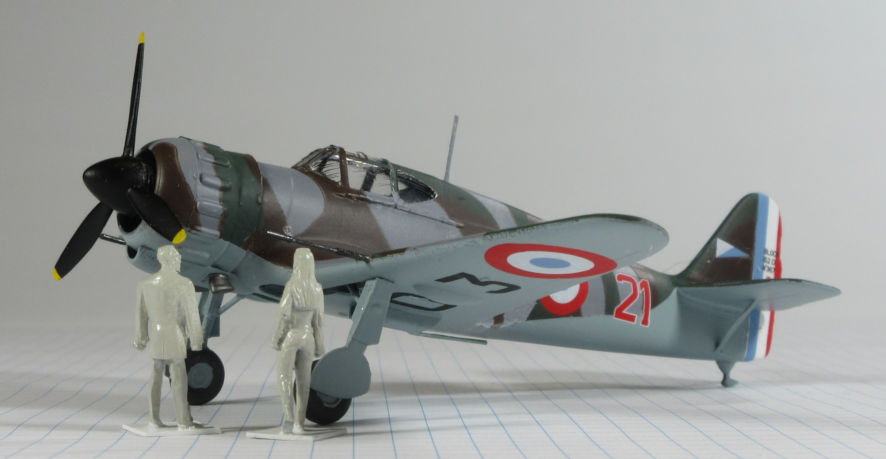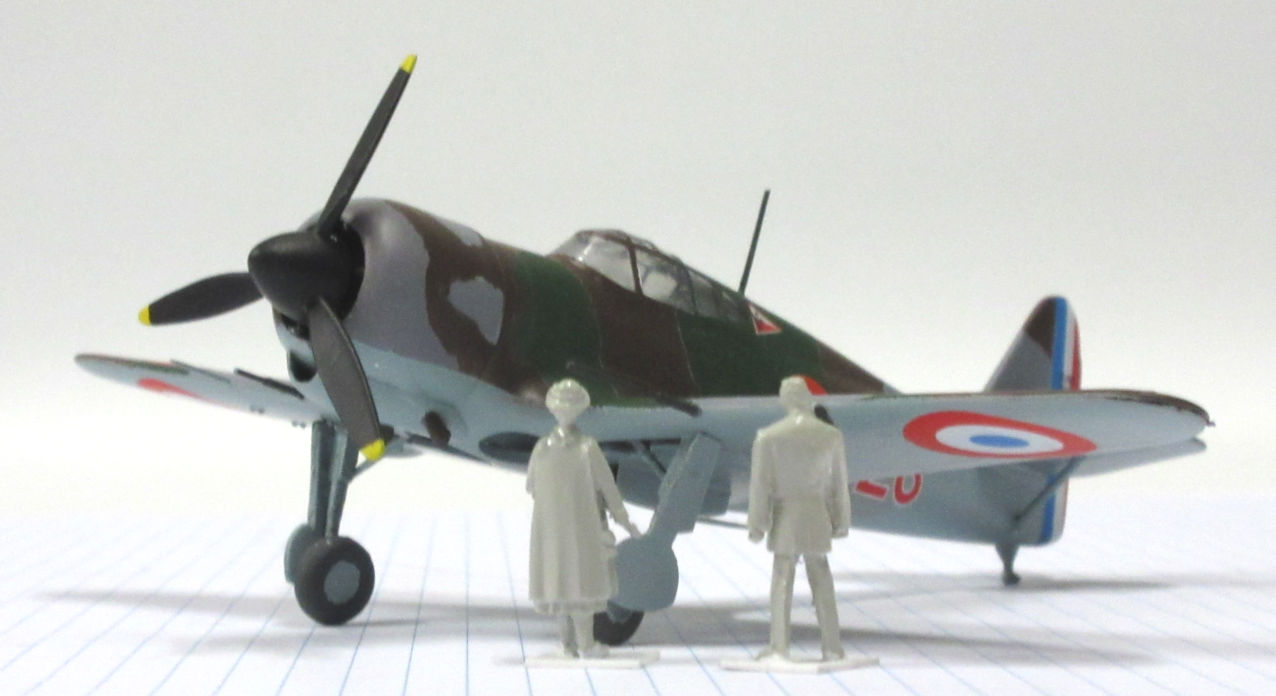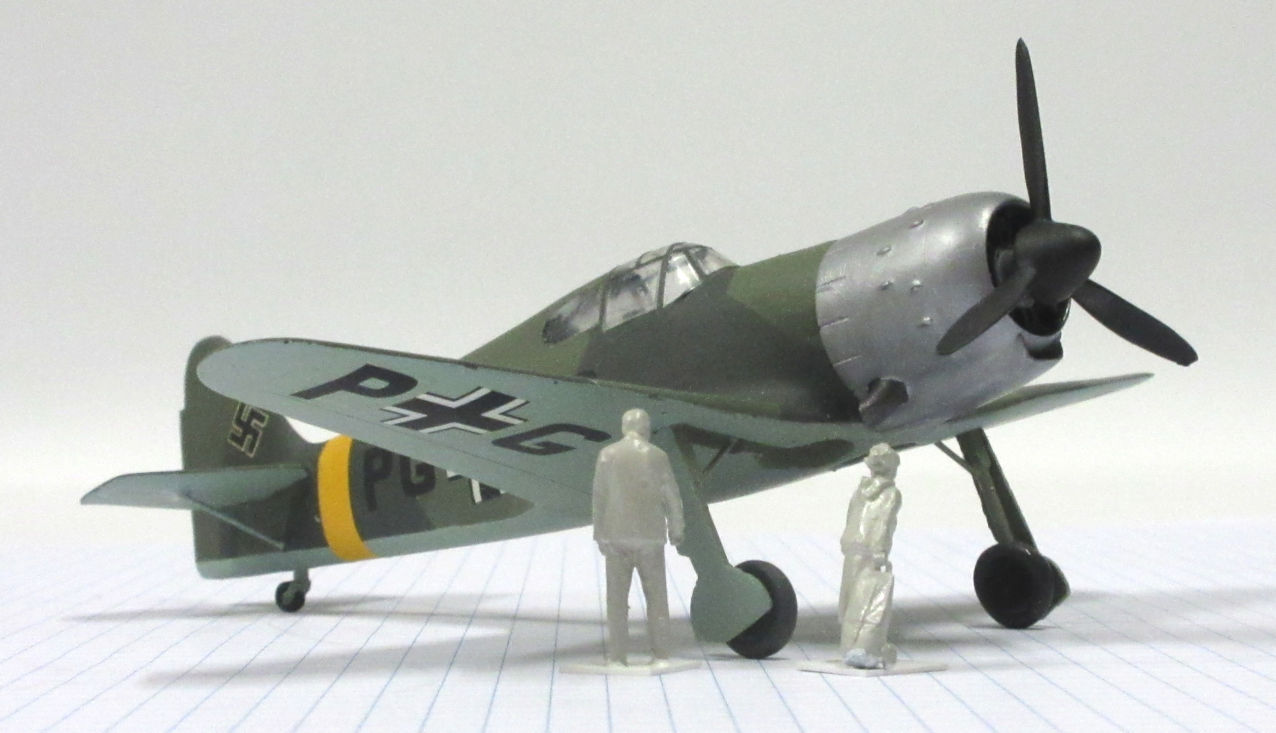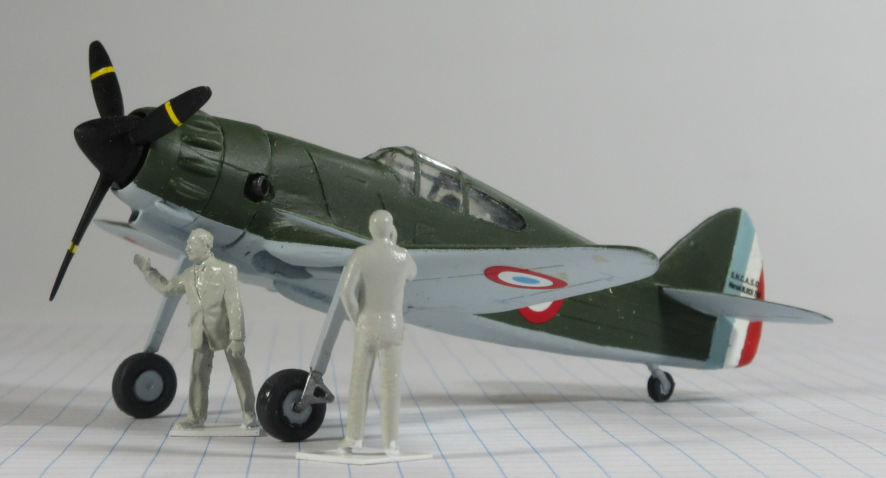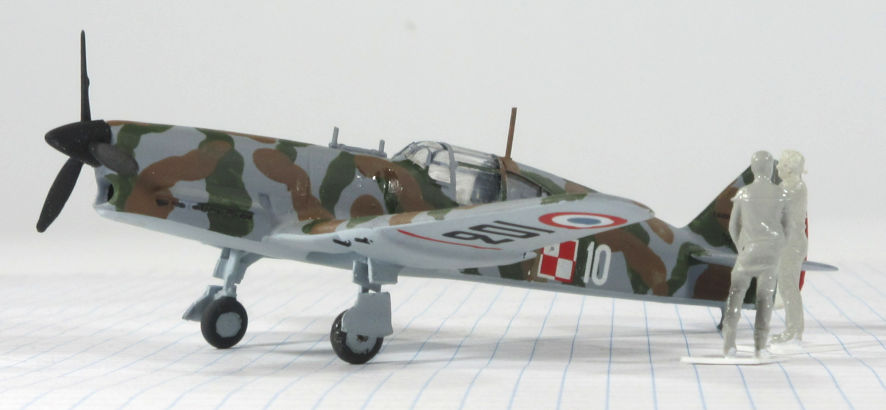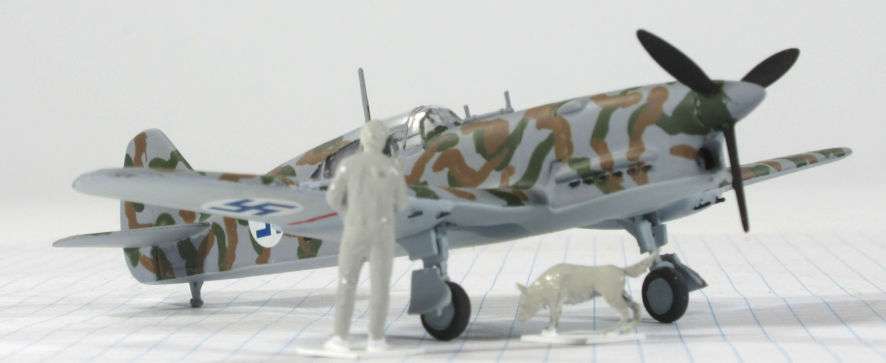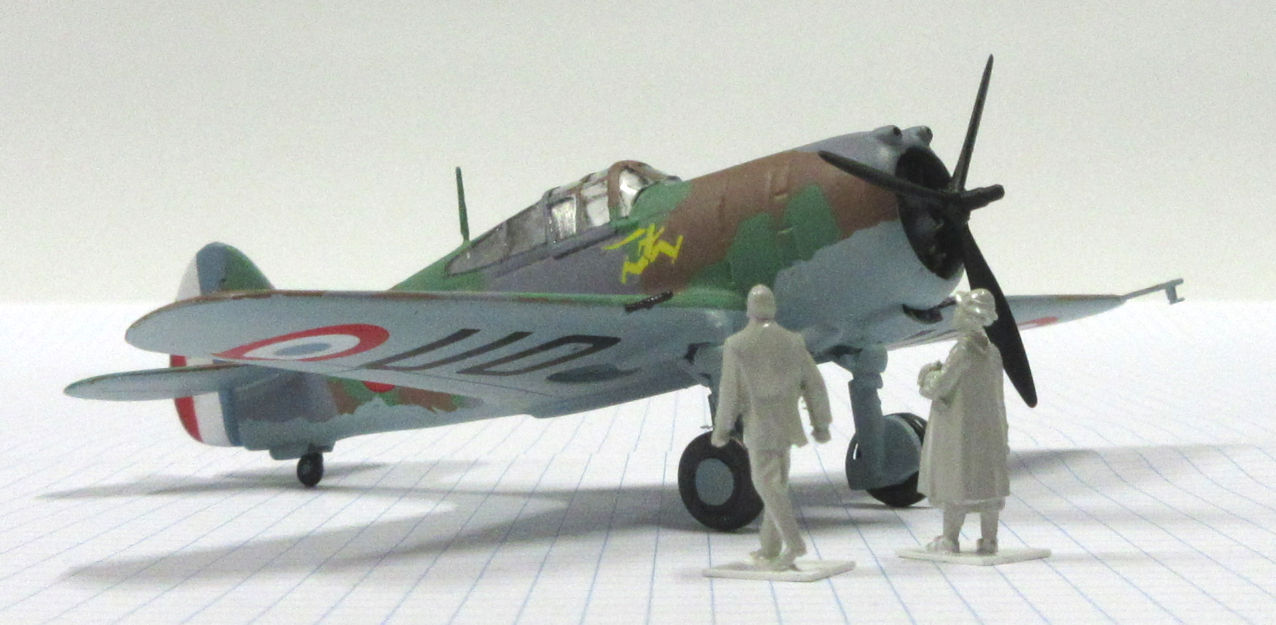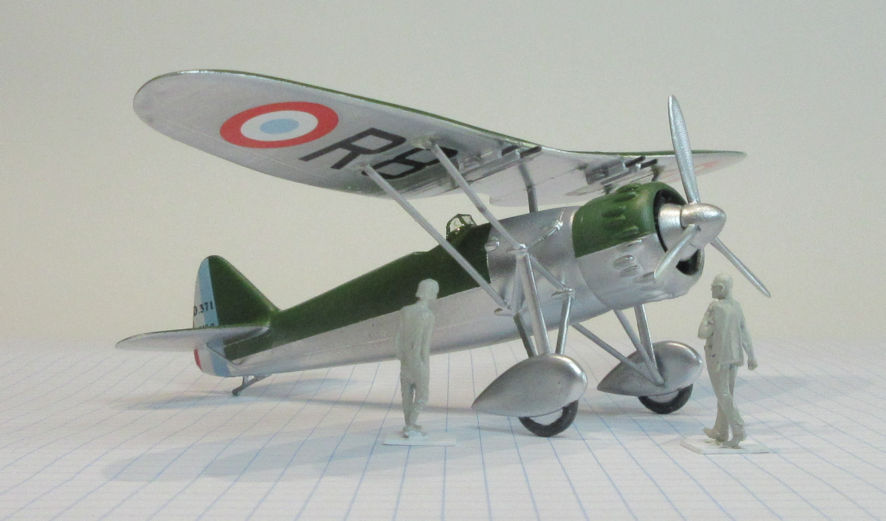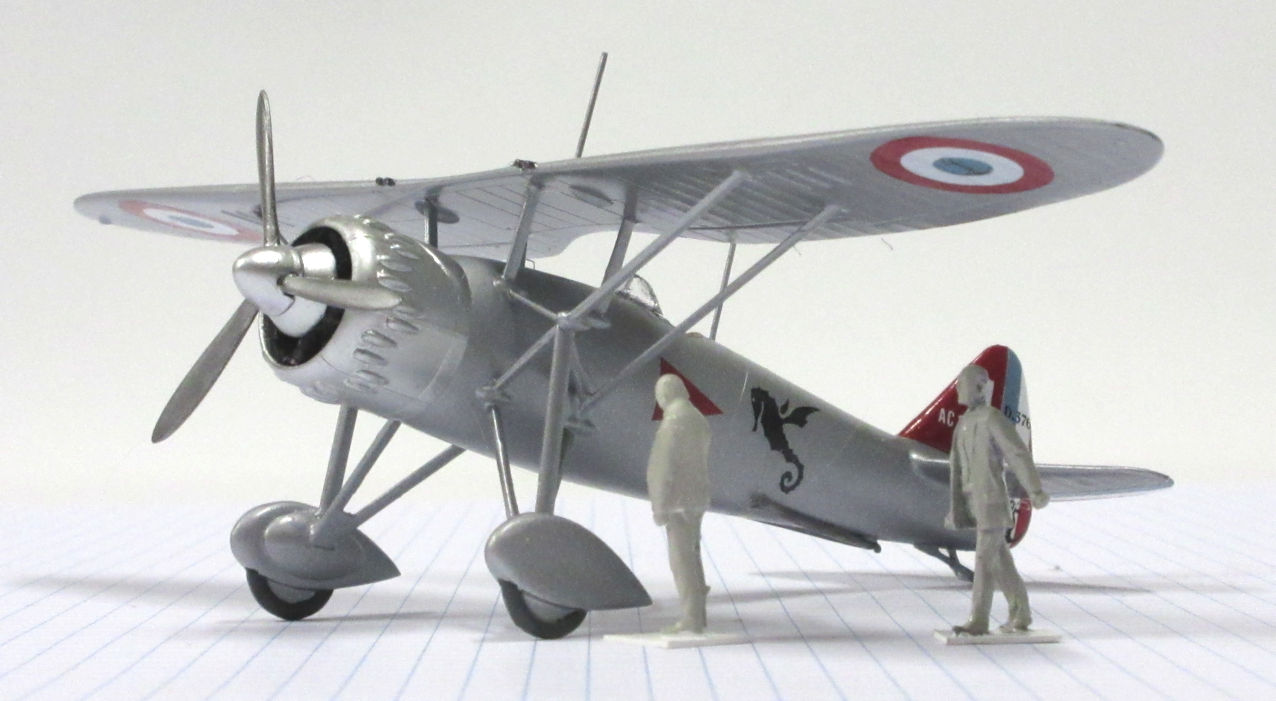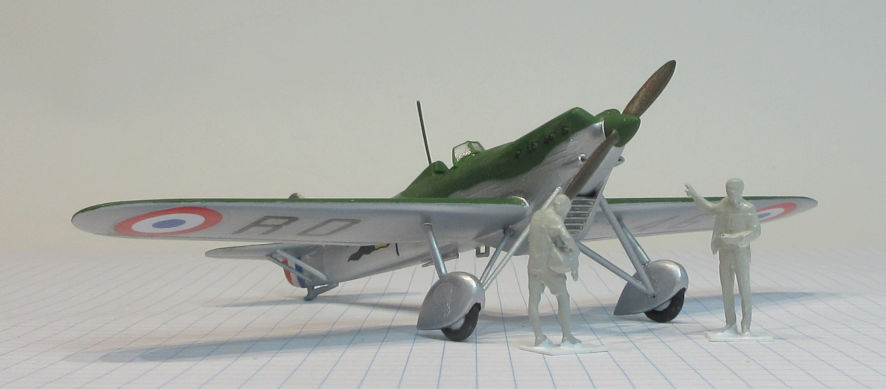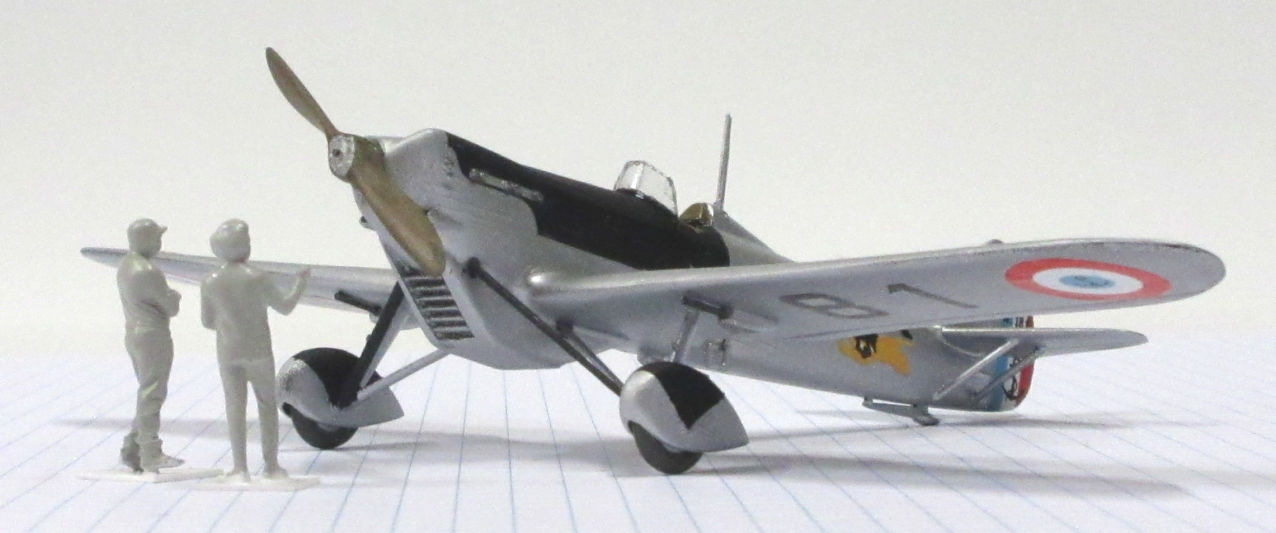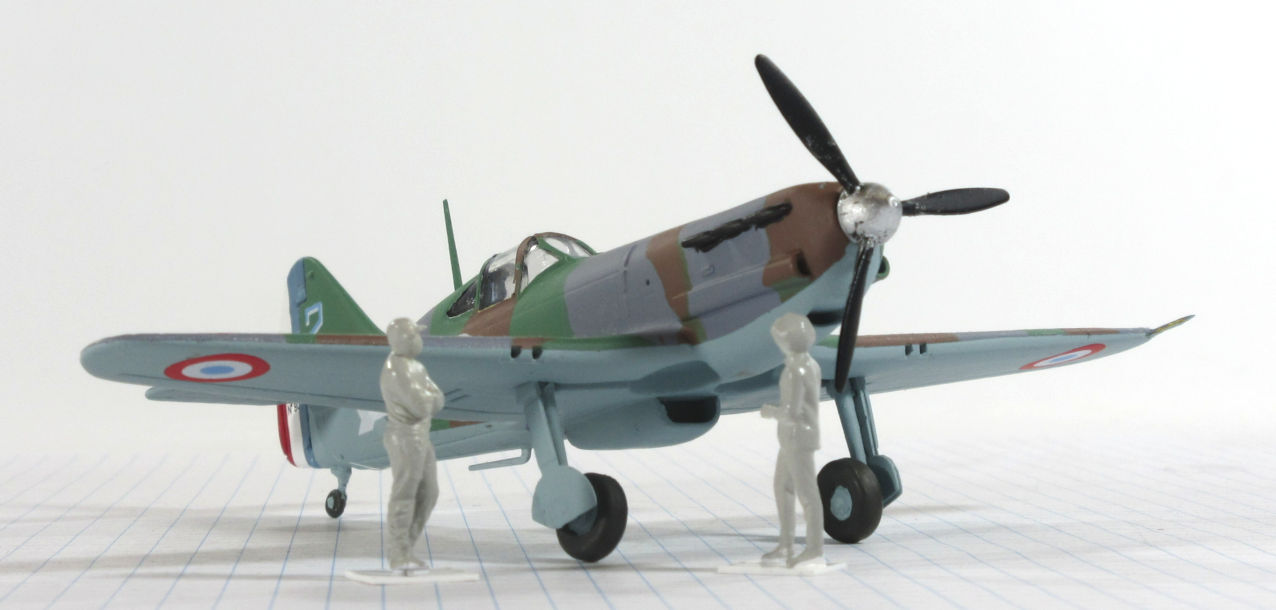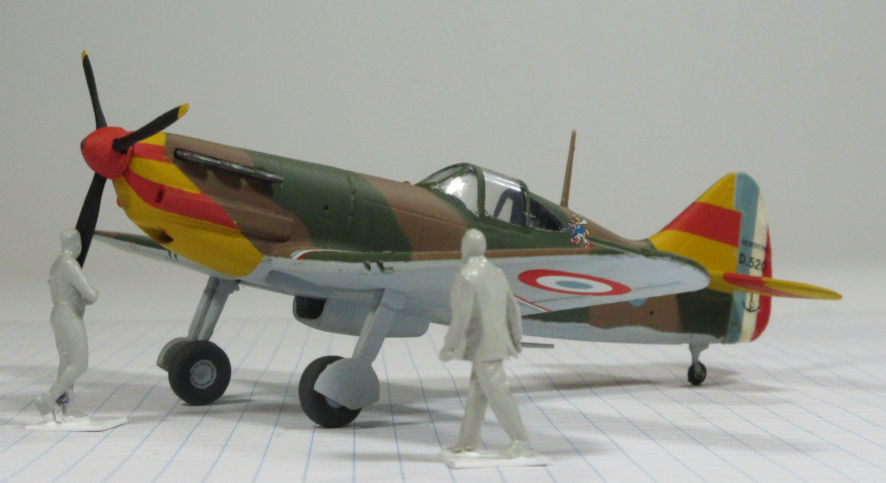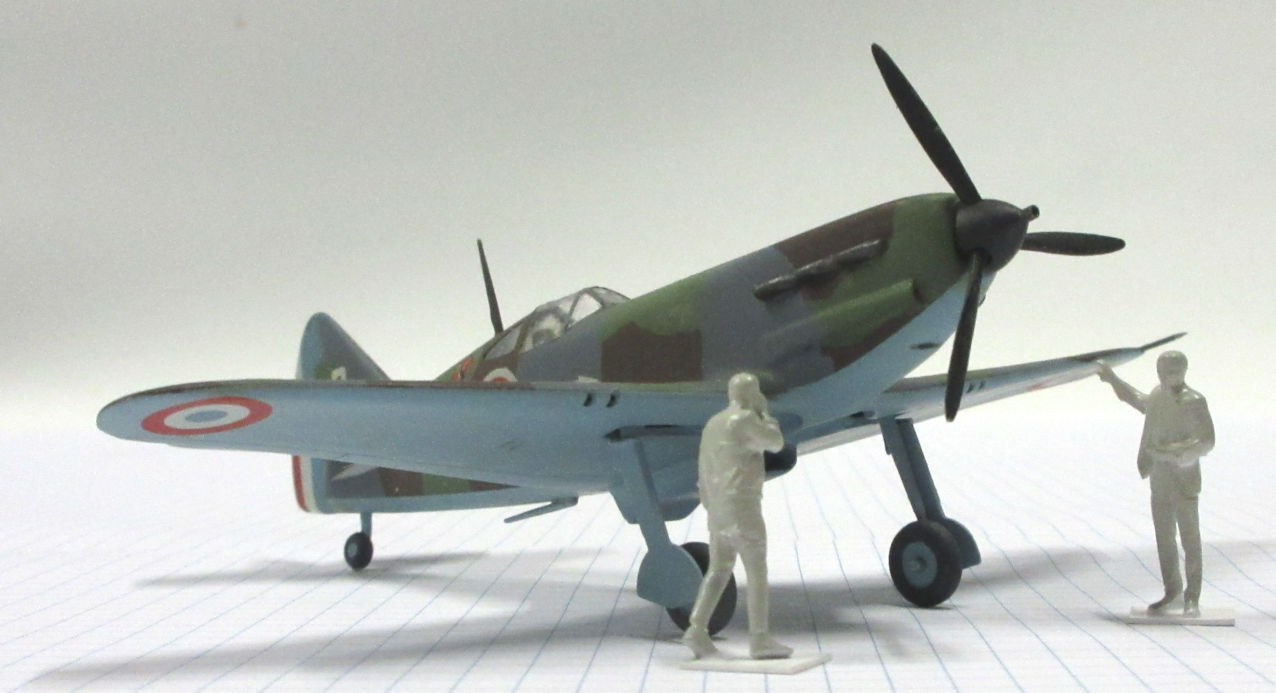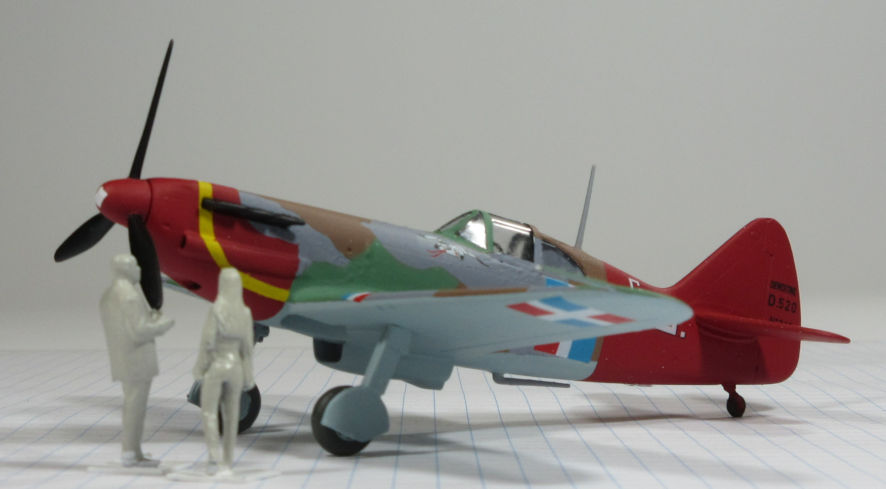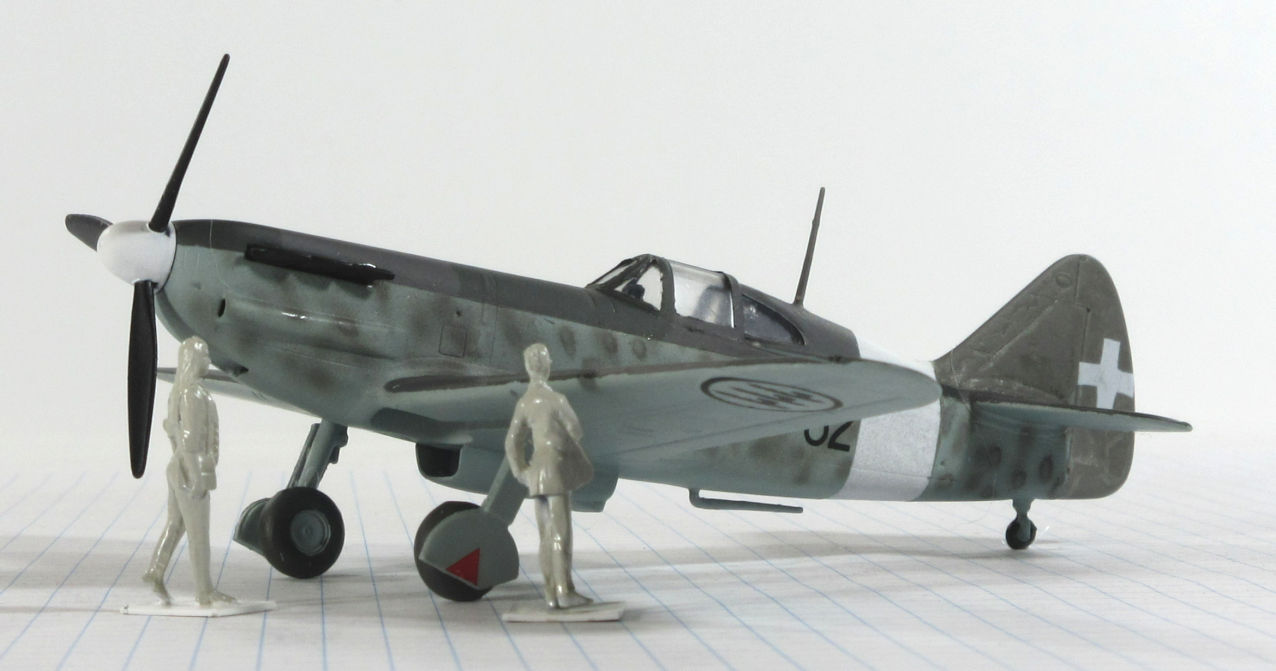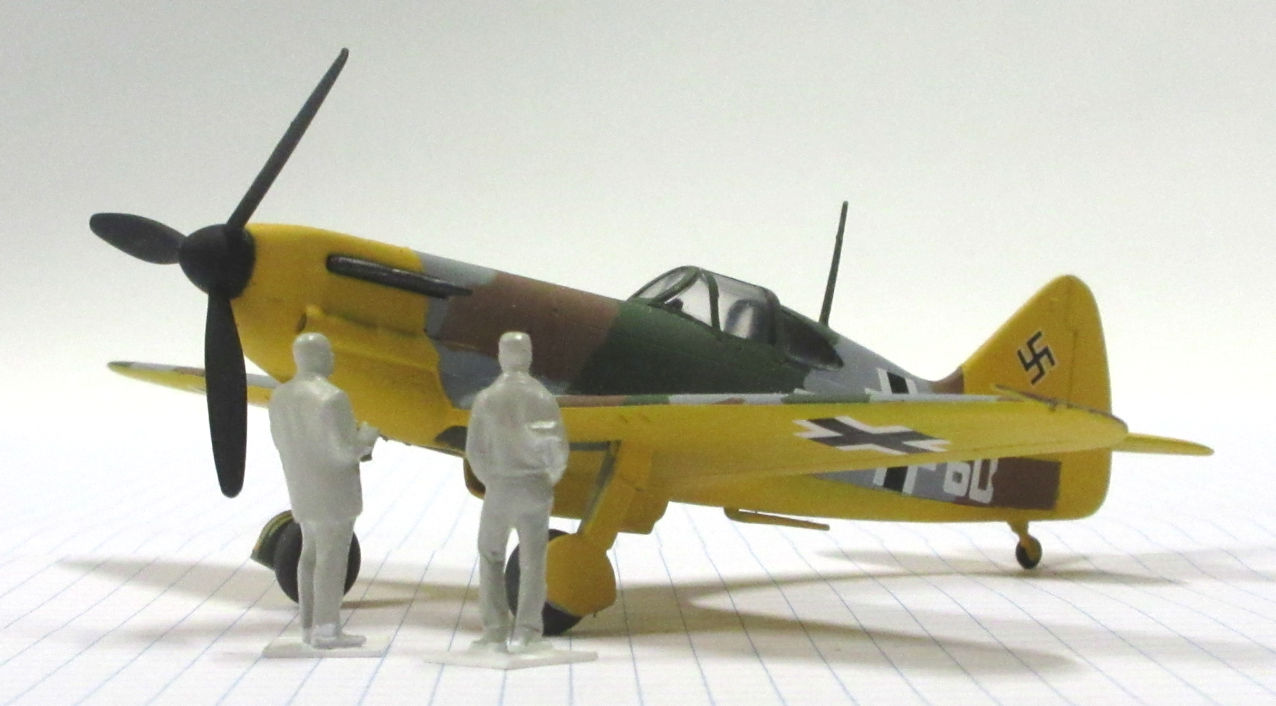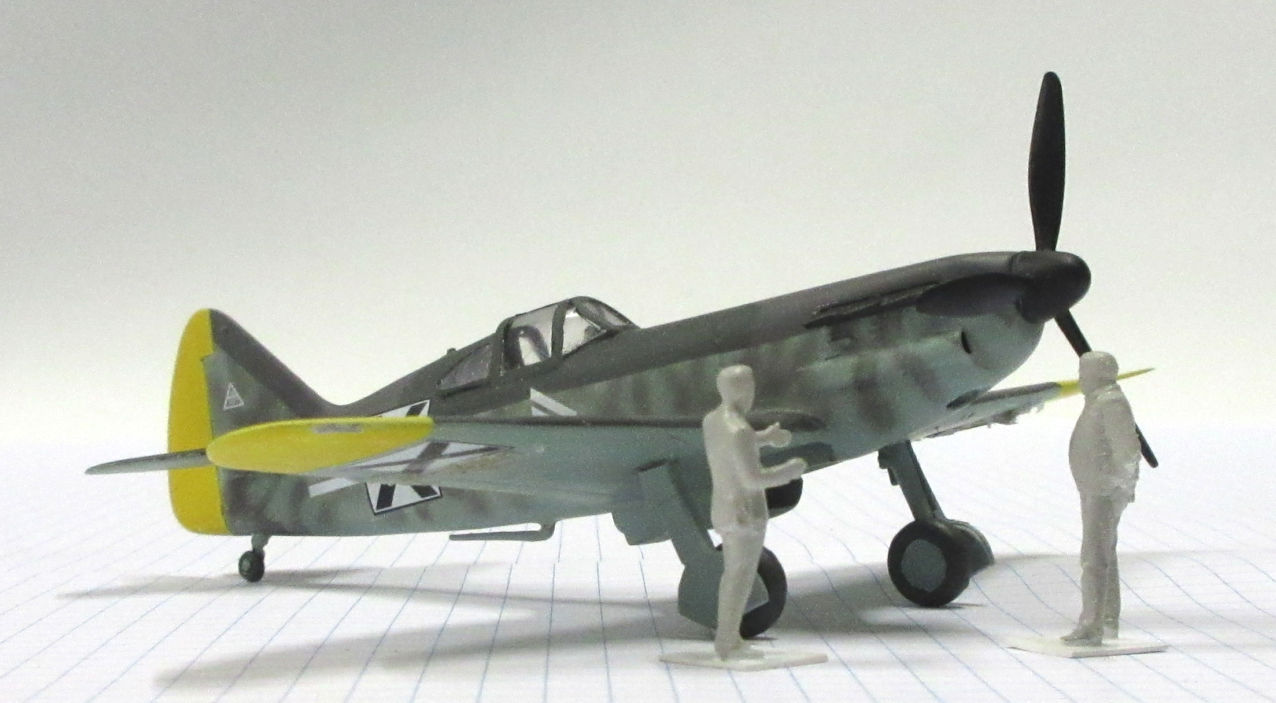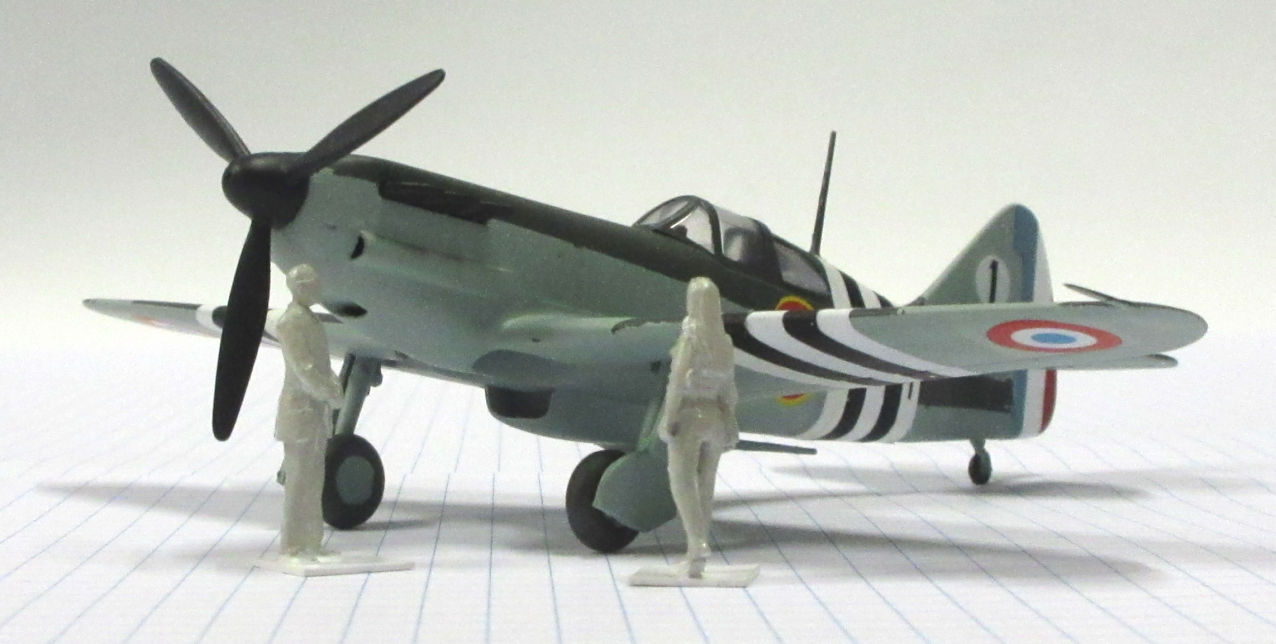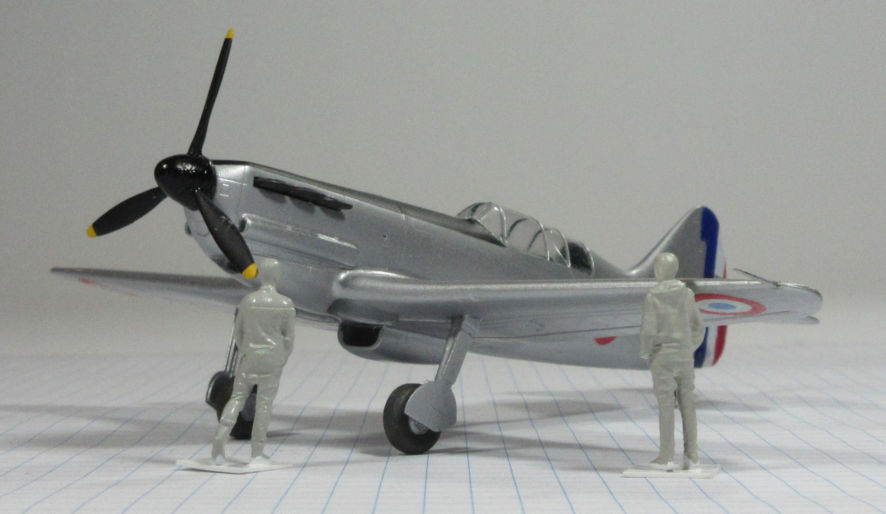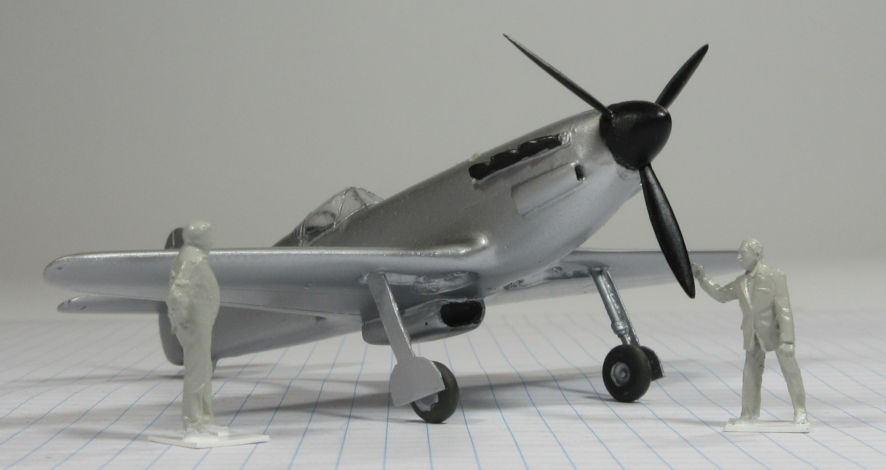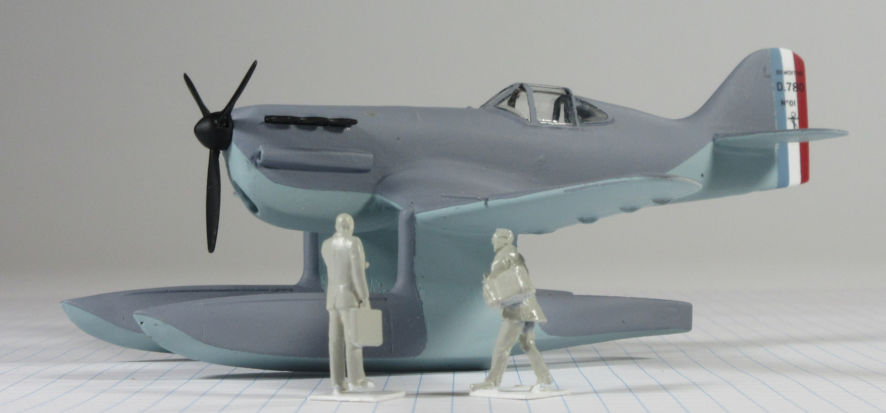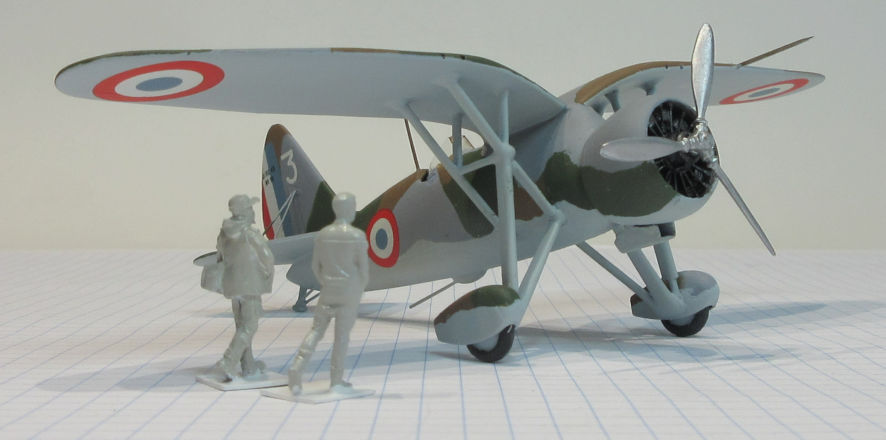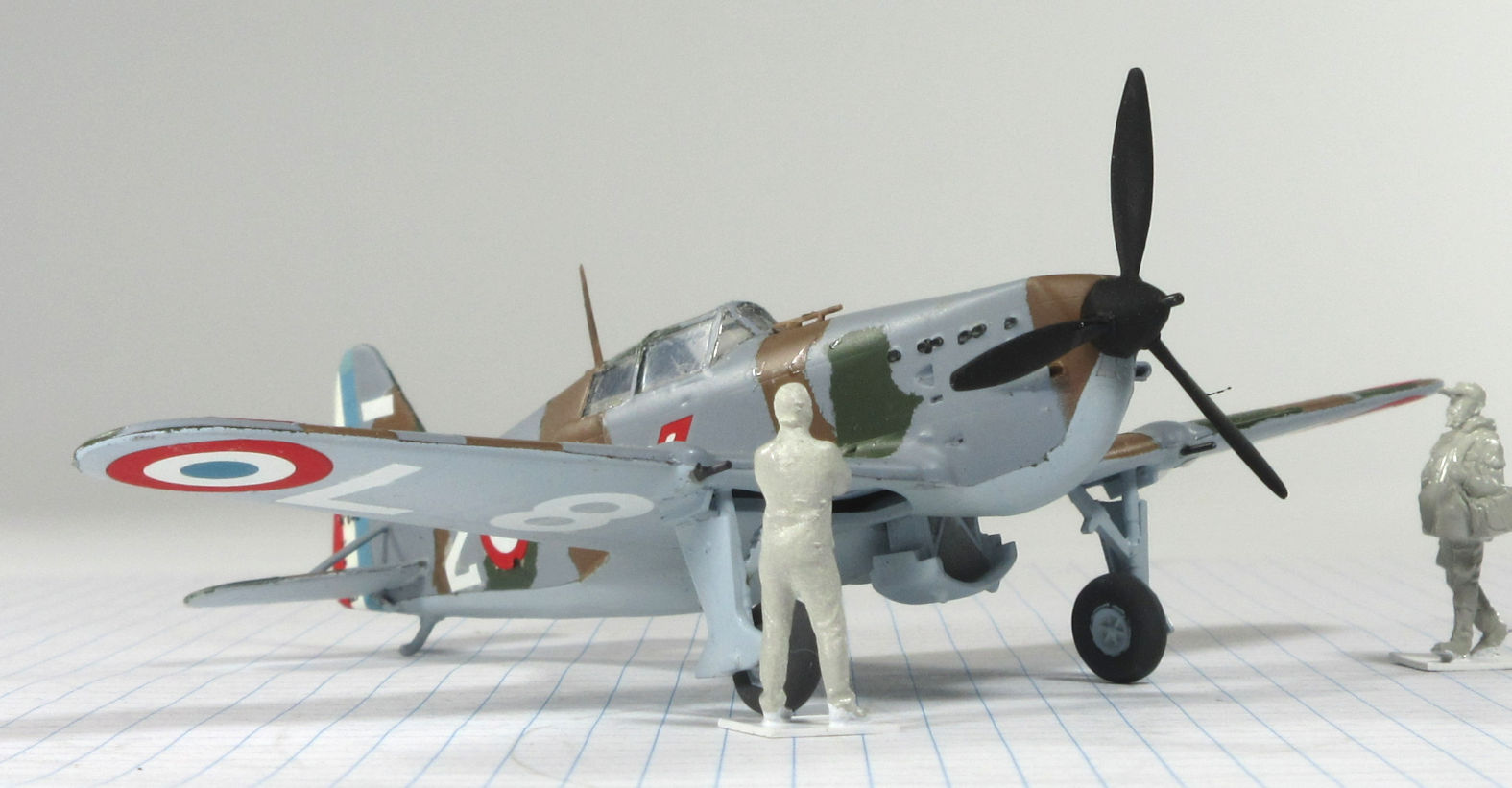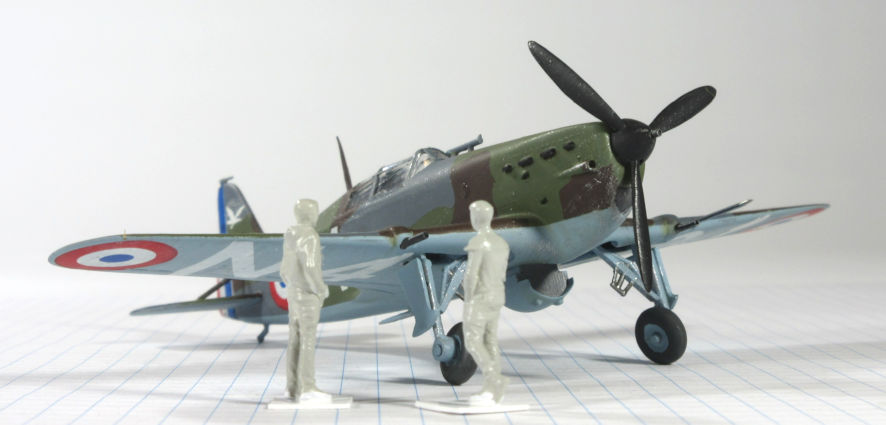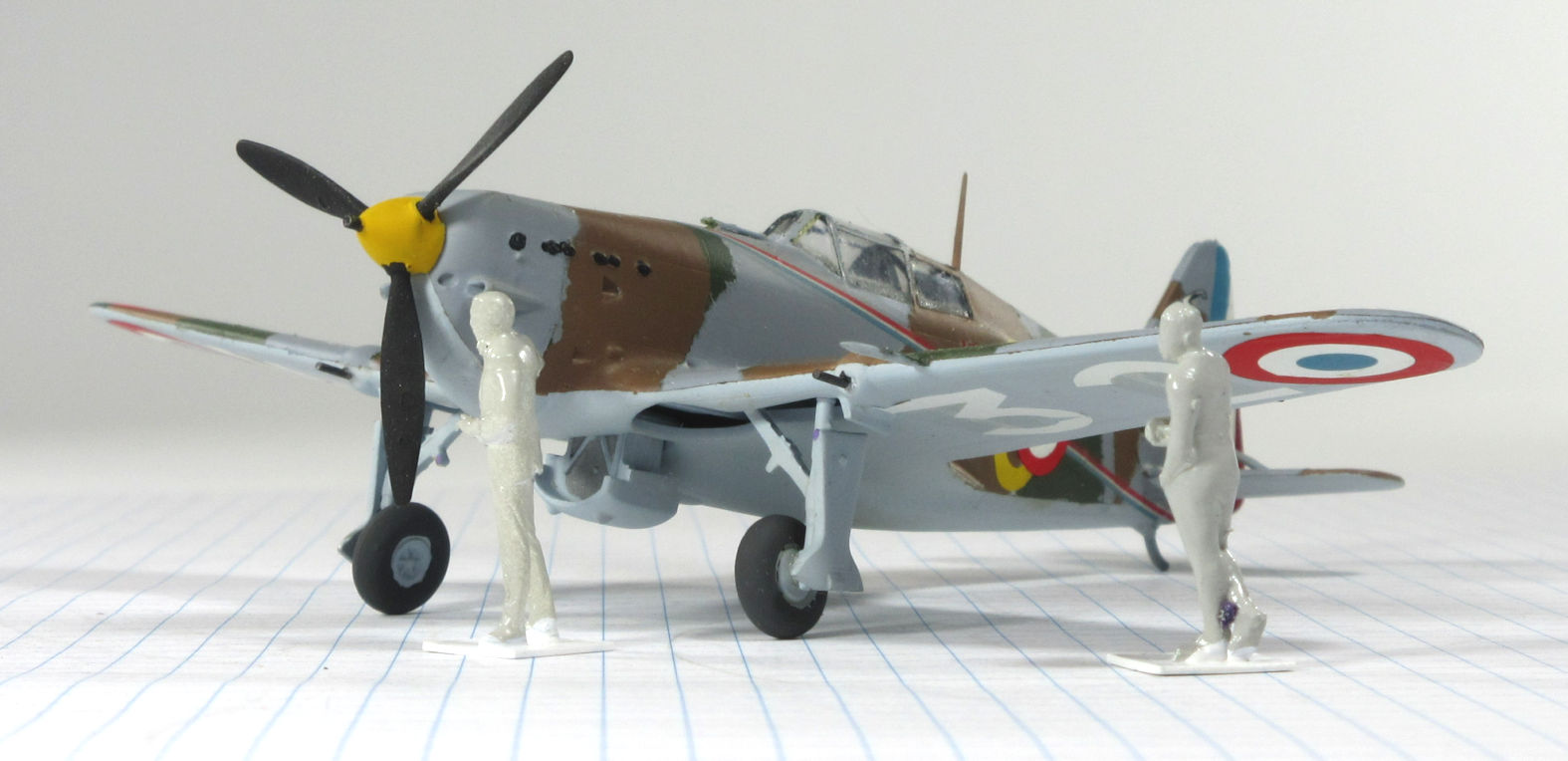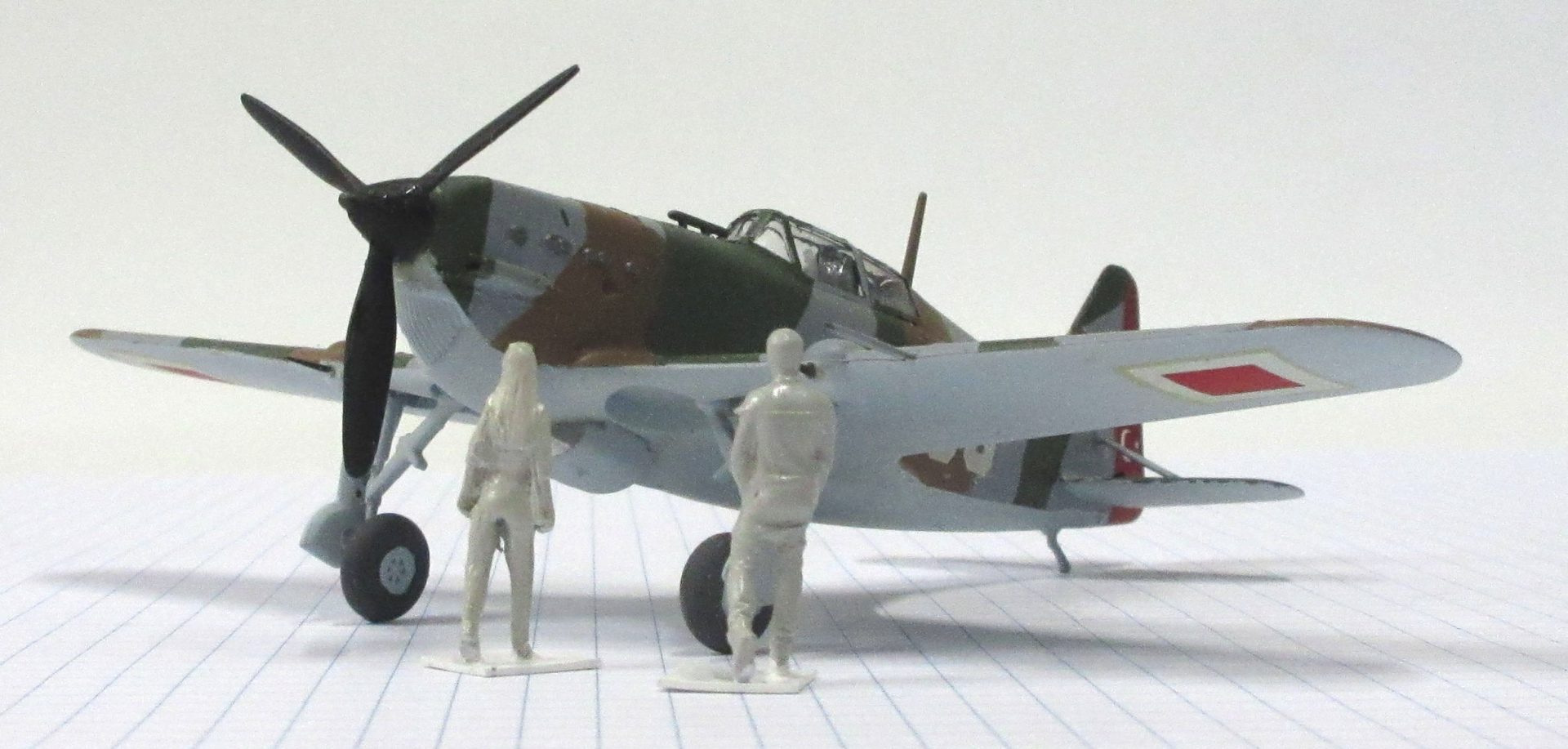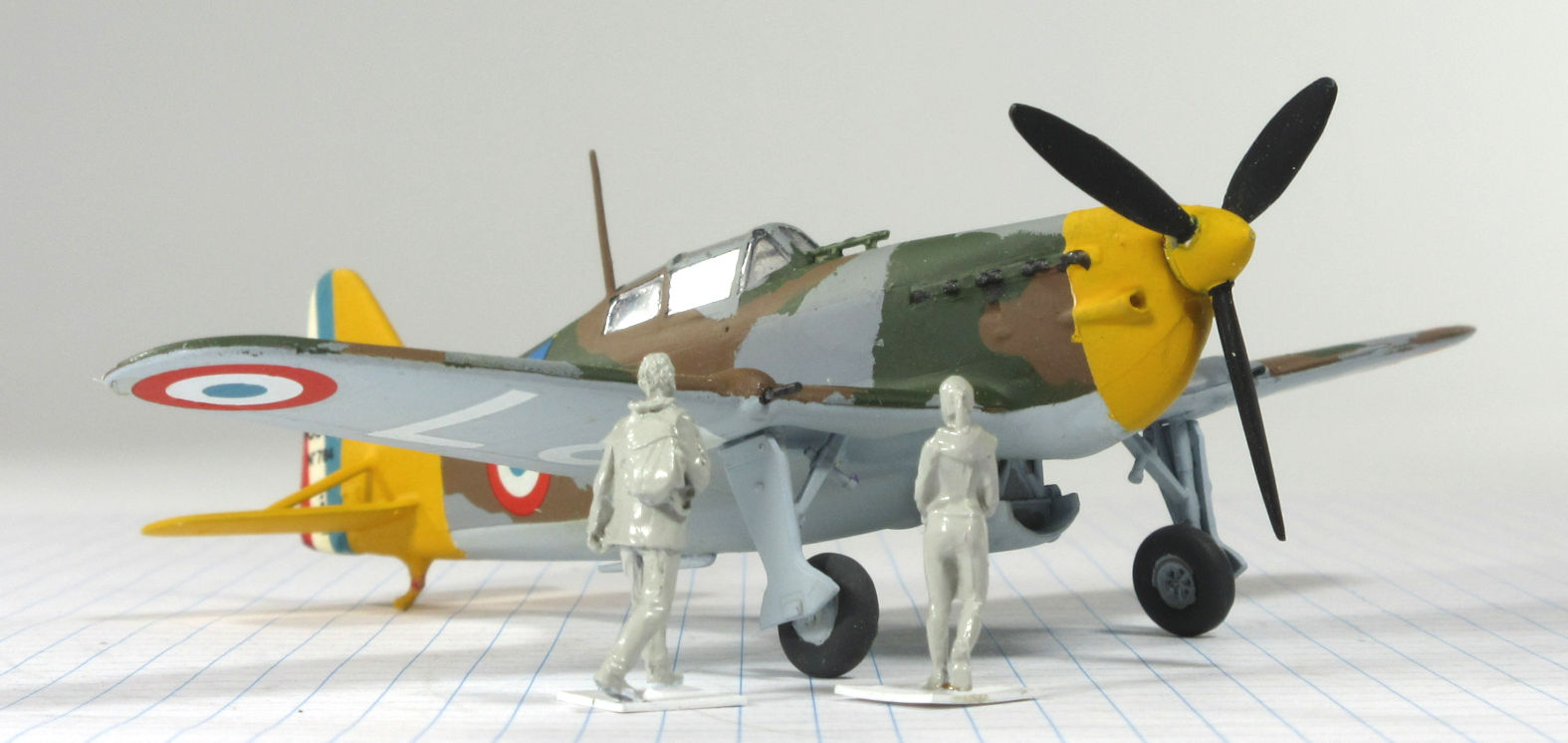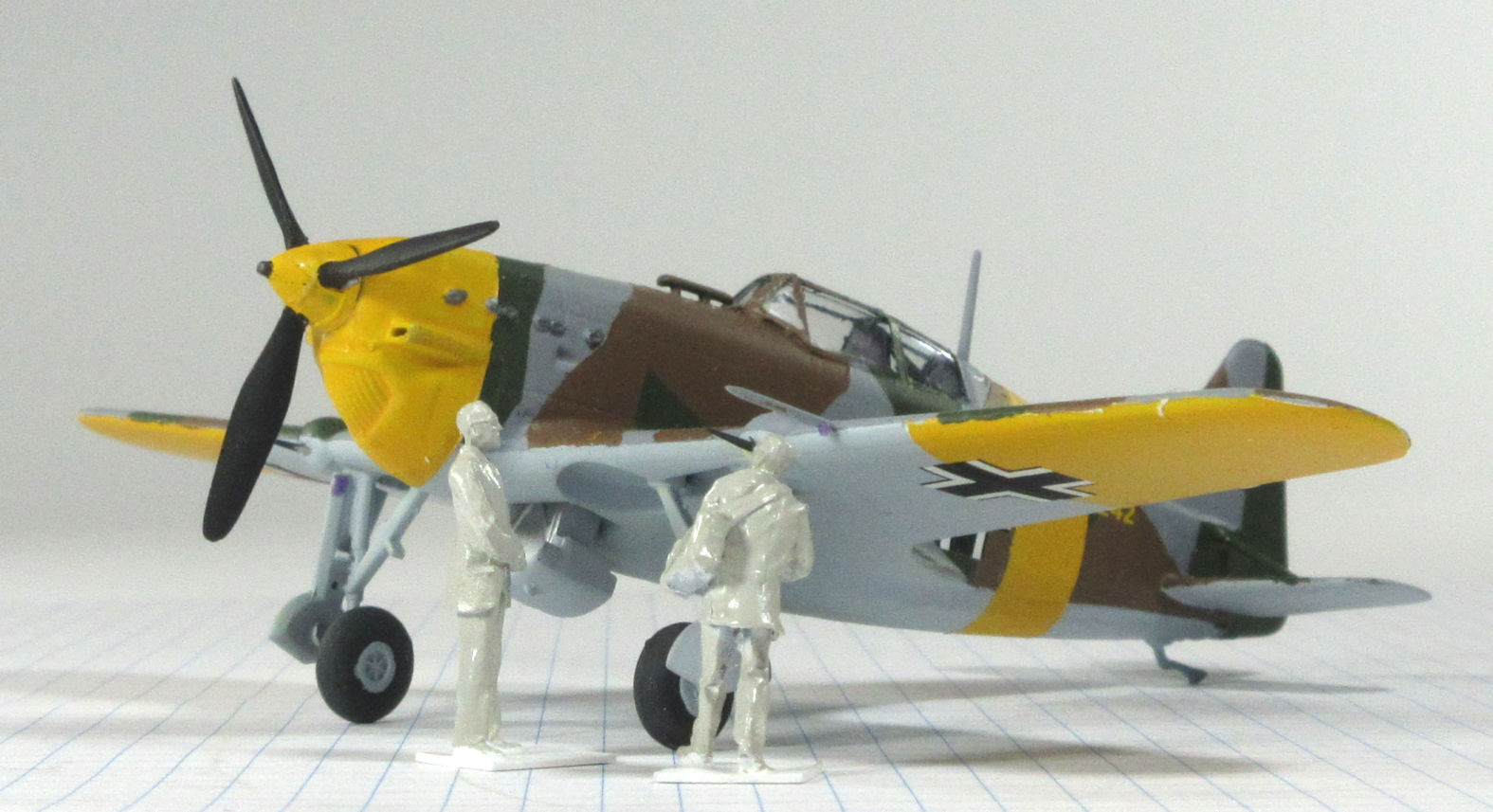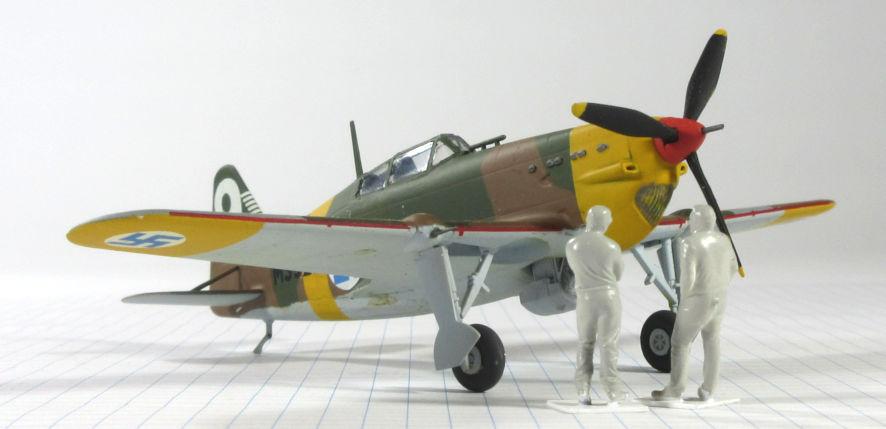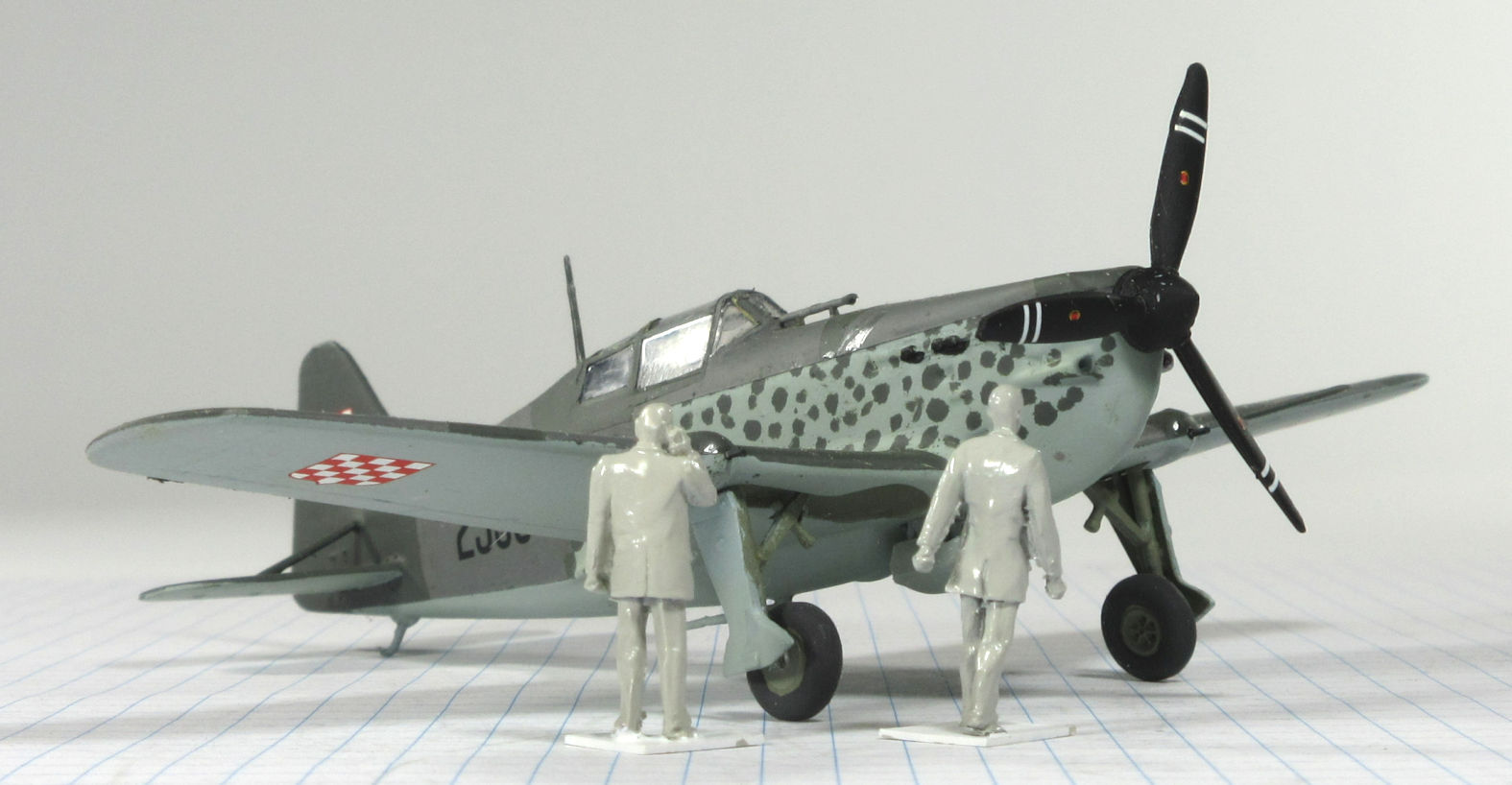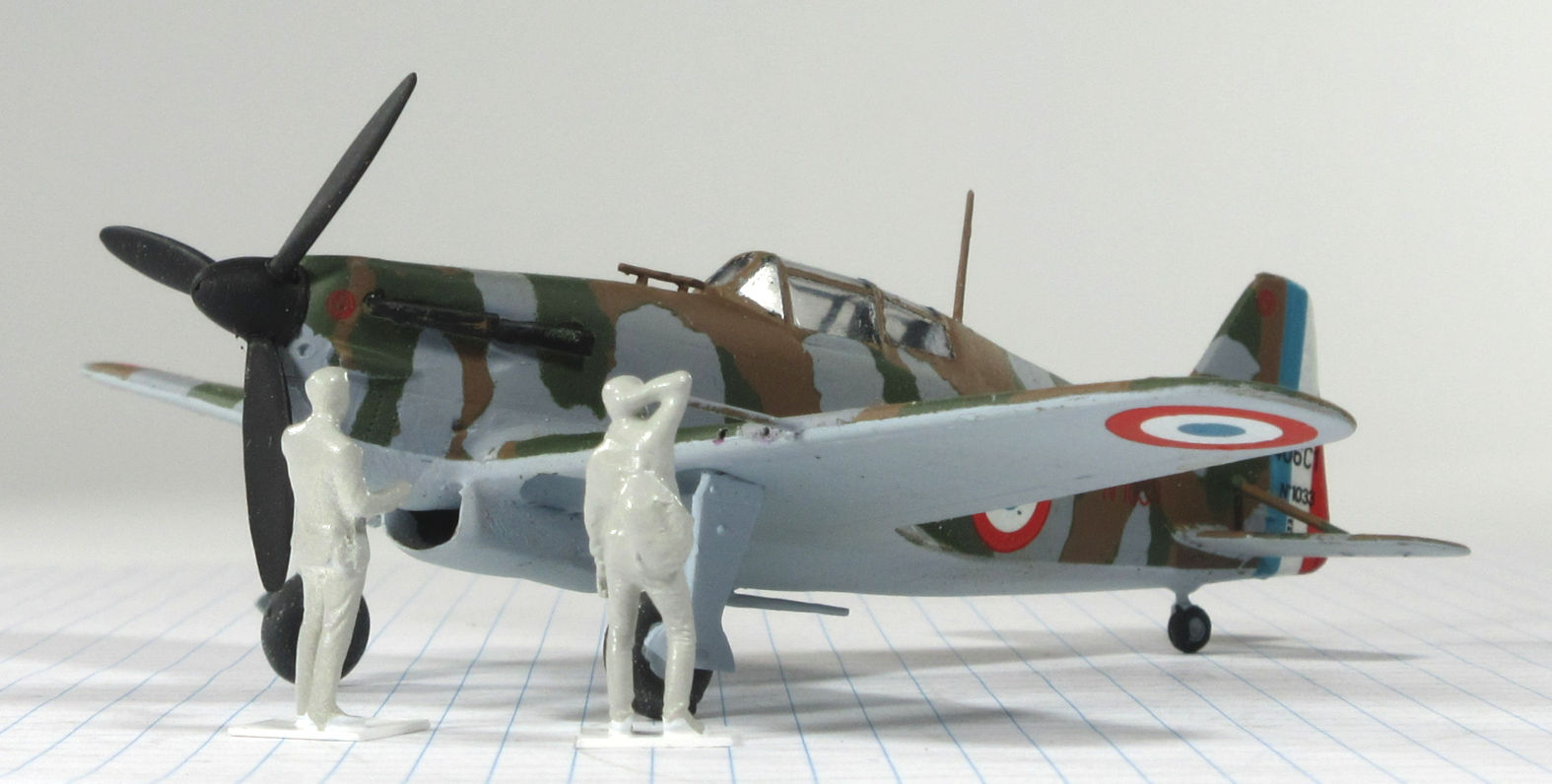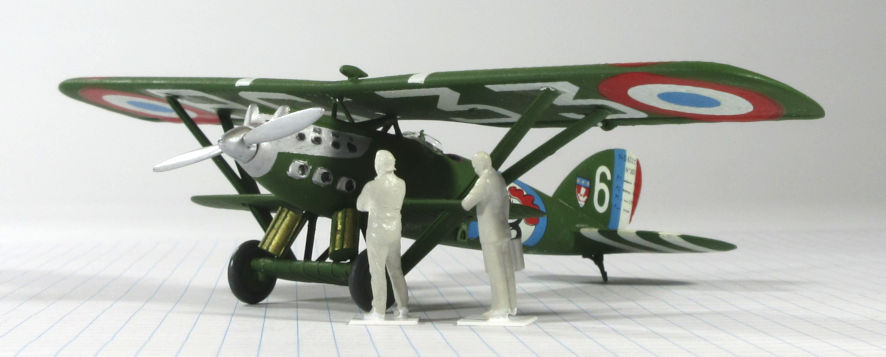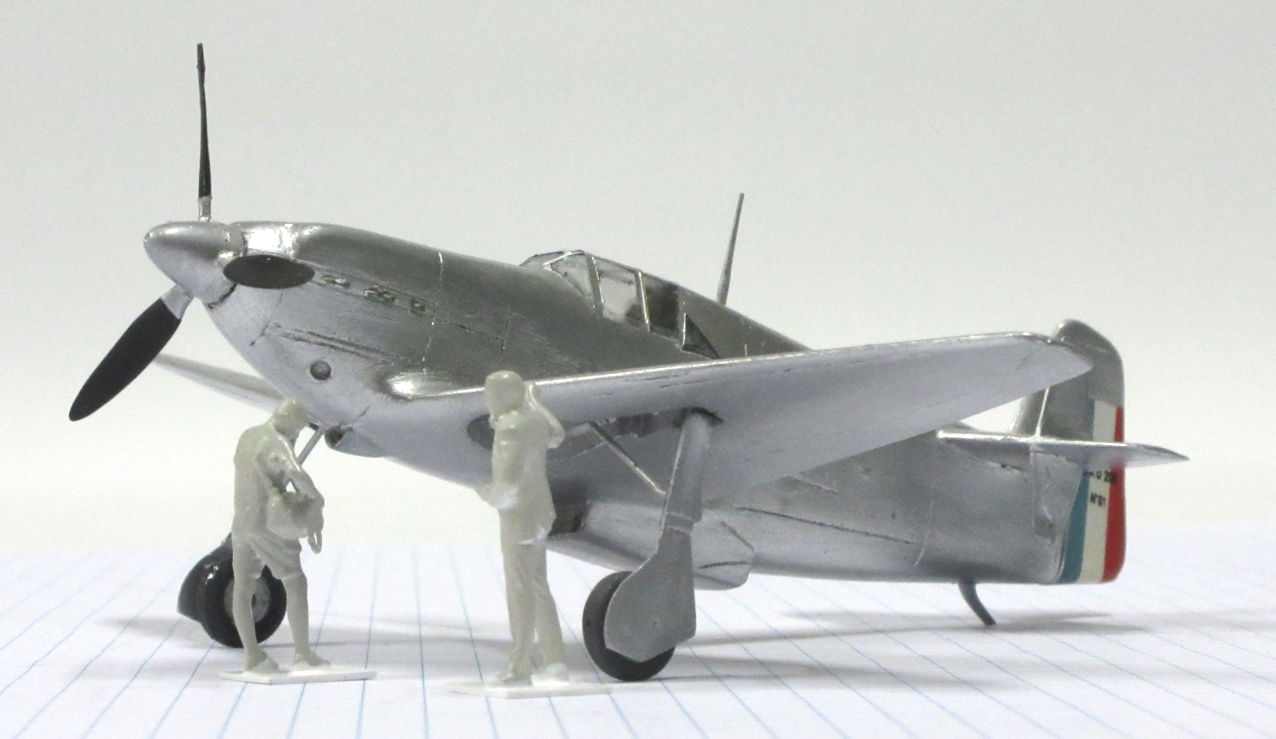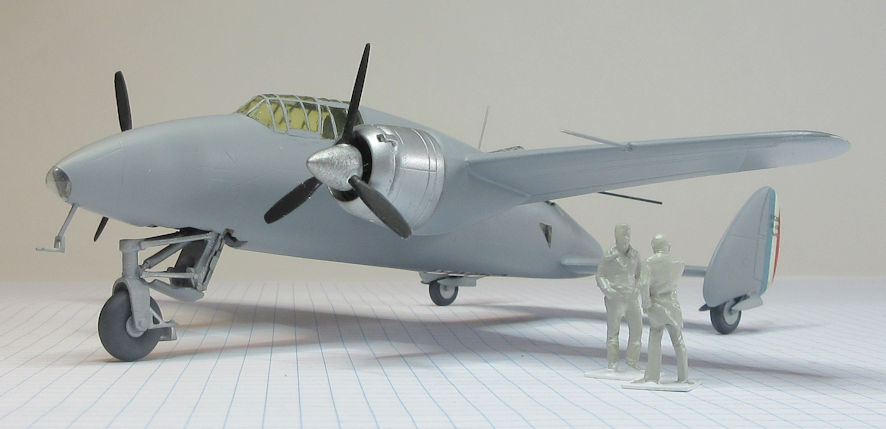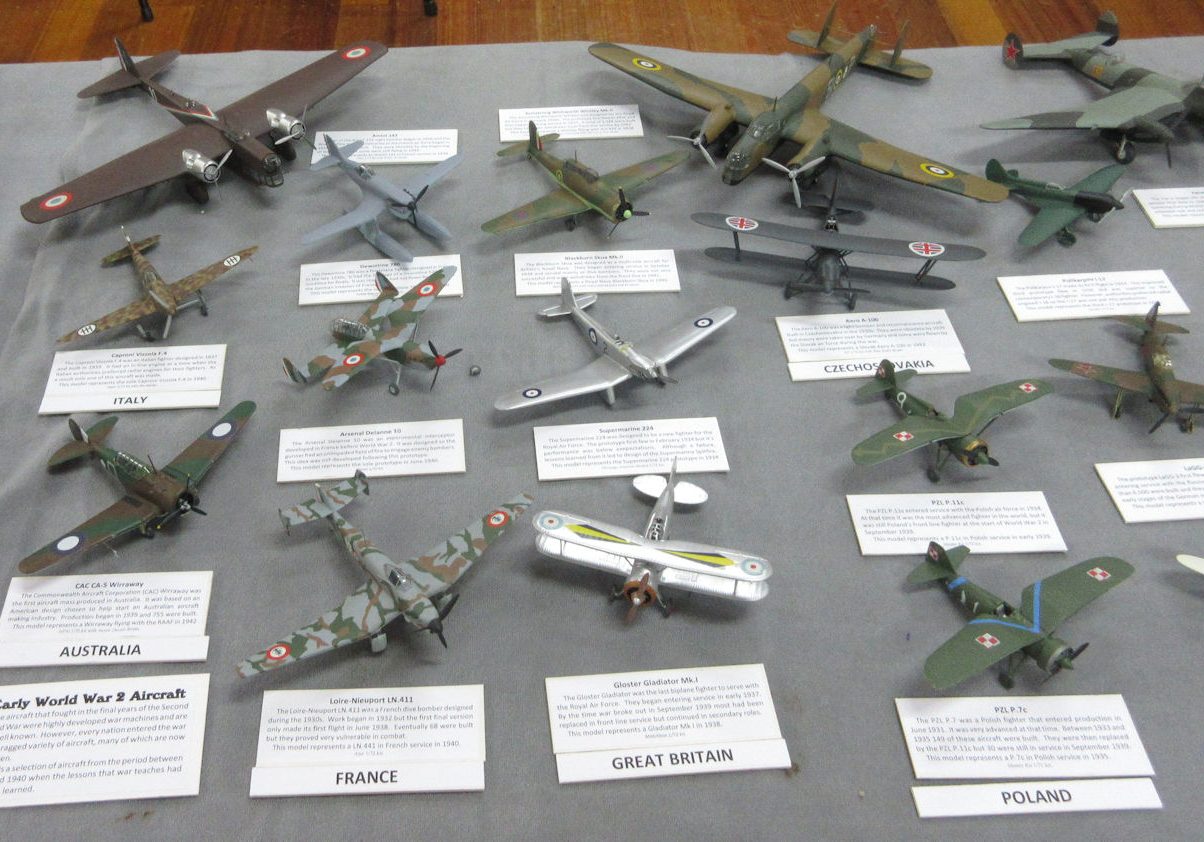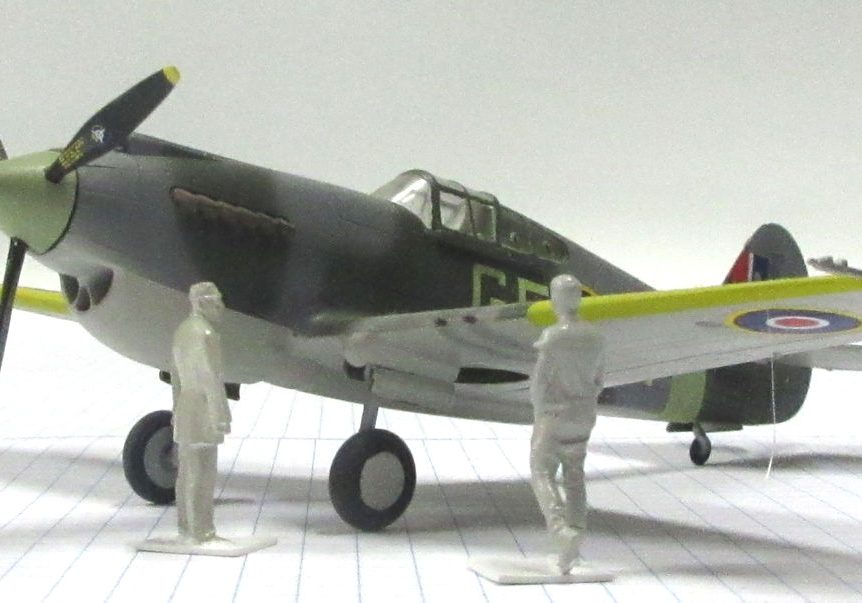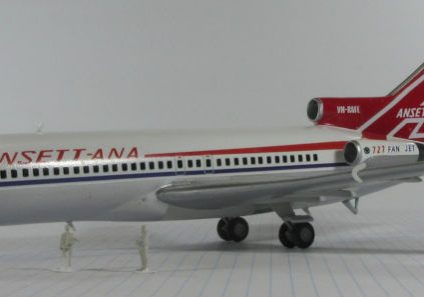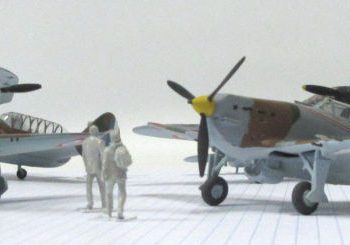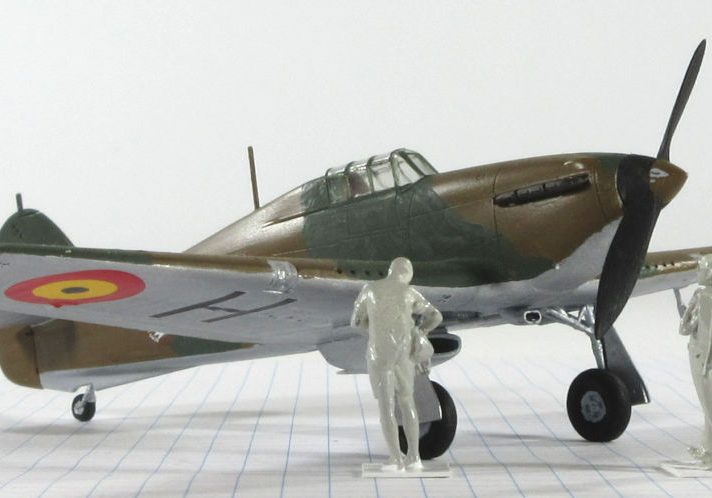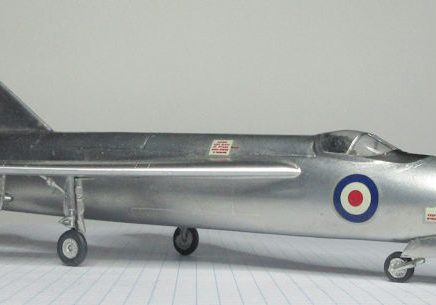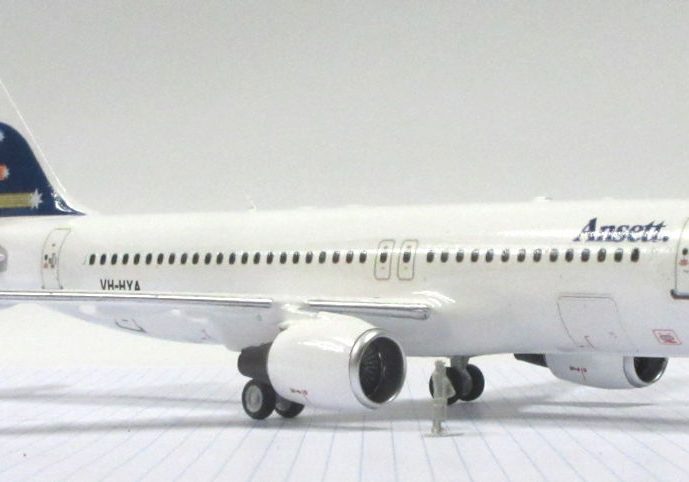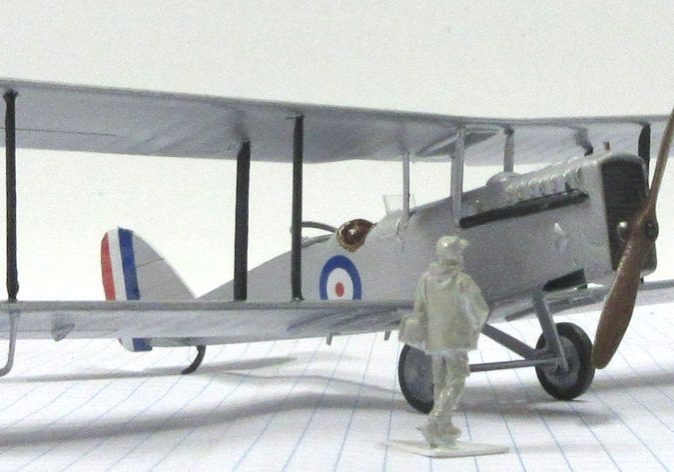Models
ANF Les Mureaux 190
The ANF Mureaux was designed to give the French Air Force a kight fughter, a concept popular around the world in the mid 1930s. However this design was not successful, due mainly to poor engine reliability.
Arsenal VG33
The Arsenal VG-33 was the production version of a light weight all-wooden fighter designed in 1936. It showed great promise and production began in 1939, but none had entered service by the time of the German invasion in 1940.
This model represents the prototype VG.33, No.01 in 1939.
This model represents an early VG-33, No.09, in May 1940
Arsenal VG.36
The Arsenal VG-36 was a high performance fighter development of the earlier VG-33 fighter. It showed great promise but only the first prototype had flown by the time of the German invasion in 1940.
This model represents the sole prototype in March 1940.
Arsenal VB-10
The Arsenal VB-10 was a heavy interceptor designed in France prior to World War II. It was not completed until after the war ended, by which time it had been superceded by new jet fighters. As a result, only four were built.
This model represents the second VB-10 in early 1948.
Arsenal Delanne 10
The Arsenal Delanne 10 was an experimental fighter developed in France prior to World War Two. It featured a tandem wing which offered improved performance, but only one prototype was completed.
This model represents the sole prototype.
Bloch 151
The Bloch 151 was the first production variant of a French fighter designed and built in the late 1930s. In comparison to later variants its performance was disappointing and it had largely been phased out of active service by May 1940.
This model represents No 37 of 1e, AC3, at Cures-Pierrefeu, France, in June 1940.
Bloch 152
The Bloch MB 152 was an excellent French fighter that did not begin development until 1937 and was not available in sufficient numbers to overcome superior German forces during the Battle of France.
This model represent a Bloch 152 of GC III/1 in May 1940.
This model represent No 16 of 6e Esc, GCIII/9, at Salon de Provence in June 1940.
Bloch 155
The Bloch 155 was a slightly improved version of the Bloch 152 and was planned to replace the earlier model in production. However, only 9 had been produced by the time of the German Invasion in May 1940.
This model represent a Bloch 155 in June 1939
Bloch 157
The Bloch 157 was potentially one of the best fighters of World War II. It matched a good fuselage with a powerful engine but only one prototype flew after Germany invaded France in 1940.
This model represents the sole Block 157 prototype in March 1942.
Bloch 700
The Bloch 700 was a French light weight fighter designed in the late 1930s to be constructed on non-strategic materials. Only one was completed before France was defeated by Germany in 1940.
This model represents the first Block 700 prototype in May 1940.
Caudron 714
The Caudron 714 was a light-weight fighter made in France during the late 1930s. It turned out to be a failure and was only flown in combat during World War II when no other fighters were available.
This model represents a Caudron 714 of 2nd Escadrille, GC1/145 at Dreux in June 1940.
Eighty of these fighters were diverted to Finland but only six arrived before the fall of France. They were found too dangerous to fly and permanently grounded in September 1940
Curtiss H-75A
Because French industry was unable to produce sufficient fighters for the country’s rapidly expanding air force the Hawk 75 was order to help fill the gap and eventually 1,130 were ordered. They served well during the Battle of France and were subsequently used by Vichy, Free French and other air forces.
This model represents a Hawk 75 flown by Camille Plubeau serving with the 4th escadrille of GC III/4 in May 1940.
Dewoitine 371
The Dewoitine D.371 was one of a series of parasol fighters designed by Emil Dewoitine during the early 1930s. It was produced in a number of versions and served in several European air forces before World War II.
Dewoitine 376
The Dewoitine 376 was a navalized version of the Dewoitine 371 French fighter. It was fitted with additional equipment including a folding wing. Twenty five were ordered but did not take part in World War II action.
This model represents a Dewoitine D.376 No 31 in service with AC1.1 of Escadrille AC1 at Lanveoc-Poulmic in 1939.
Dewoitine 500
The Dewoitine 500 was designed in the early 1930s and entered service in 1935. For its time it was an exceptional fighter but within a few years it had become obsolete due to the rapid evolution of fighter aeroplanes.
This model represents Dewoitine 500 No.47, (the first production aeroplane) of 1ére Esquadrille, Groupe de Chasse 1/4, c. 1936.
Dewoitine 501
The Dewoitine 501 was a cannon armed version of the Dewoitine 500 that entered service in 1935. It was an exceptional fighter for its time but soon made obsolete by the rapid evolution of fighter design in the 1930s.
This model represents Dewoitine 501 No.181 of 8 Ecadron de cooperation navale, Aeronautique Navale, Marignane-Marseille, 1938
Dewoitine 510
The Dewoitine 510 was a version of the earlier Dewoitine 500 and 501 fighters fitted with a more powerful engine. They began entering service in 1936 but were obsolete by the beginning of the Second World War in 1939.
This model represents Dewoitine 510 No.219 of 3 Escadrille, GCII/1 at Etampes in 1938.
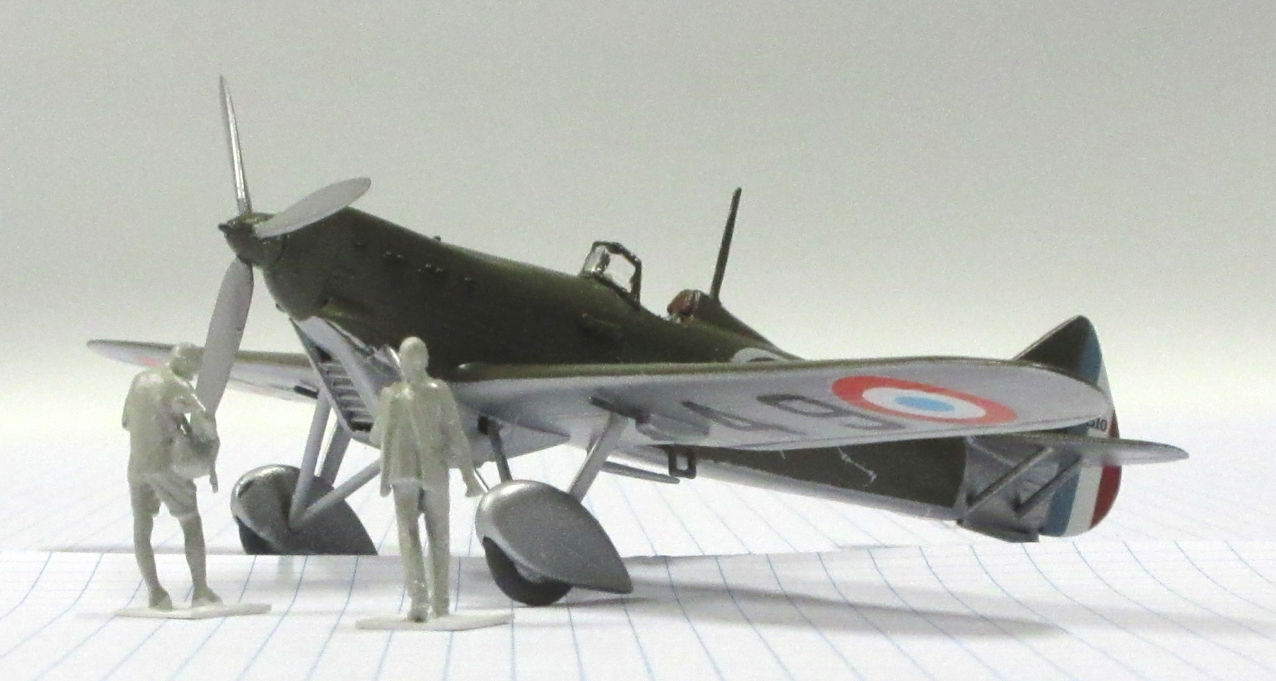
Dewoitine 520
The Dewoitine D.520 was perhaps the best French fighter during the Battle of France. After the Armistice with Germany was signed in June 1940 a large number served with the Vichy French Air Force.
This model represents Dewoitine 520 No80 of the 1st Escadrille GC I/3 serving with the Vichy Air Force around August 1940.
The Dewoitine D.520 was perhaps the best French fighter during the Battle of France. After the Armistice with Germany was signed in June 1940 a large number served with the French Vichy and other Axis Air Forces.
This model represents a Dewoitine 520 flying for the Luftwaffe at StMartin-du-Touch in 1941.
The Dewoitine D.520 was perhaps the best French fighter during the Battle of France. After the Armistice with Germany was signed in June 1940 a large number served in the Vichy air force until it was disbanded in November 1942.
This model represents a Dewoitine 520 of Escadrille 2AC, Aeronautique navale (Vichy) in Algeria, 1941.
This model represents Dewoitine 520 No140 of Escadrille 1AC in France in 1941.
This model represents Dewoitine 520 No.347 of the 4th Escadrille GC II/7 serving with the Vichy Air Force in Tunisia in December 1941 wearing an experimental livery.
This model represents a Dewoitine 520 flying for the Reiga Aeronautica at Metato in July 1943.
When Germany took over the rest of France in November 1942 it captured 246 D520s and a further 72 were completed under occupation. Some were transferred to Italy and others to the Bulgarian air force, the remainder were used by the Luftwaffe as advanced trainers.
This model represents a Dewoitine 520 serving with the Luftwaffe at Toulouse-Francazal c.1943/44.
When Germany invaded the Free Zone of France in November 1942 it captured 246 Dewoitine 520s. They were transferred to the Balkan front and about 100 were delivered to Bulgaria. They were mainly used to defend against attacking American bombers.
This model represents a Dewoitine 520 flying for the Bulgarian Air Force, flown by the Commander of 6 Group and based near Karlovo in 1944.
After the Vichy air force was disbanded and following the Allied invasion of France in 1944 many Dewotine 520s were flown by Free French forces, including a group led by Marcel Doret that operated in the south of France attacking German ground forces.
This model represents a Free French Dewoitine 520 flying with Groupe Doret at Toulouse-Blagnac in October 1944.
The Dewoitine 520DC (Double Commande) was a two seat trainer conversion of the standard Dewotine 520 fighter. Fourteen were converted and served in the French Air Force between 1946 and 1953.
This model represents a standard Dewoitine 520DC in about 1948.
Dewoitine 551
The Dewoitine D.551 was an improved version of the Dewoitine D.520 fighter. It was ordered into production in 1939 but none had been completed by the time of the French surrender in June 1940.
This model represents a prototype Dewoitine 551 in May 1940.
Dewoitine 780
The Dewoitine 780 was a floatplane fighter designed in France in the late 1930s. It was based on the fuselage of the Dewoitine 520 fighter but had not flown by the time of the German invasion of France in 1940.
This model represents the only one made in May 1940.
Loire 46
The Loire 46 fighter was developed in the early 1930s and demonstrated good characteristics for that period. Only a small number were produced and they had been relegated to training work by the beginning of World War Two.
This model represents Number 19 flying at the Cazaux Gunnery School in 1939.
Morane Saulnier 406
The Morane Saulnier 406 was France’s most numerous front line fighter during the Battle of France. They were sturdy and manoeuvrable but were outclassed by German fighters and suffered heavy losses during the Battle.
This model represents a Morane Saulnier 406, number 113 (N432), of GC II/3 at Dijon in February 1940.
This model represents Morane Saulnier 406, number 101 of GC III at Norrent-Fantes in May 1940
This model represents a Morane Saulnier 406, number 846 (L875), of GC III/1 at Cambrai-Niergnies in June 1940.
Turkey acquired 45 of these aeroplanes, some of which had originally been ordered for the Polish Air Force.
This model represents a Morane Saulnier 406 serving with the Turkish Air Force in 1940.
The Morane Saulnier 406 was France’s most numerous front line fighter during the Battle of France. After the Armistice they remained in service with Vichy French air force and flew in opposition to Allied forces.
This model represents a Morane Saulnier 406 of 2nd Escadrille, GC 1/7 of the Vichy air force at Aleppo-Nerab, Syria in July 1941.
After the German victory many were captured for use by the Luftwaffe and some of those were later sold to Finland.
This model represents a captured Morane Saulnier 406 in Luftwaffe markings at the time of its delivery to Finland in 1942.
Finland ordered 50 of these fighters which entered service there in February 1940 and continued flying until the end of the war. During the 1940 ‘Winter War’ with Russia Finn MS406s recorded 14 victories for no losses.
During the ‘Continuation War’ the gradual introduction of better Russian fighters the MS 406 became outclassed but desperate shortages kept it in service while the skill of its pilots continued to see it hold its own in the air.
After France was Defeated Germany continued to supply Finland with many more MS406s which were given some improvements from 1943 and the final Finn MS406 victory occurred in August 1944.
This model represents MS327 flown by U Lehloaara of 2/LeLv 28 of the Finnish Air Force, September 1941.
After the Armistice they remained in service with several air forces and some served with the Croatian Air Force.
Despite their poor performance some were reconditioned and sold to several air forces. Forty-eight were sold for service in the Croatian Air Force in 1943 but by 1944 only about twenty remained operational and they were completely outclassed by Allied fighters such as the P-47 and P-51.
This model represents a Morane Saulnier 406 in the Croatian Air Force in 1944.
Morane Saulnier 410
The Morane Saulnier 410 was a conversion of the existing Morane Saulnier 406 fighter. The modifications gave the fighter improved firepower and increased speed but less than 100 were converted to that standard.
This model represents a Morane Saulnier 410 at Orley Airfield in June 1940.
Nieuport Delage 622
The Nieuport-Delage Ni-D622 was the final major version of a Nieuport design that had begun with the Ni-D42 series in 1924. The Ni-D622 that entered service in 1931 was obsolescent but was still in reserve service in 1939.
This model represents a standard operational NiD622.
SNCAO 200
The SNCAO 200 was designed to participate in the 1937 competition to select a new French fighter. By the time it was delivered for testing the Dewoitine 520 has already been selected for production instead.
This model represents the sole SNCAO 200 prototype in early 1939.
SNCASE SE-100
The SE-100 was developed in the late 1930s specifically to intercept and destroy enemy bombers. Although the prototype performed well this aeroplane was developed too late to take any part in the Second World War.
This model represents the sole prototype.





